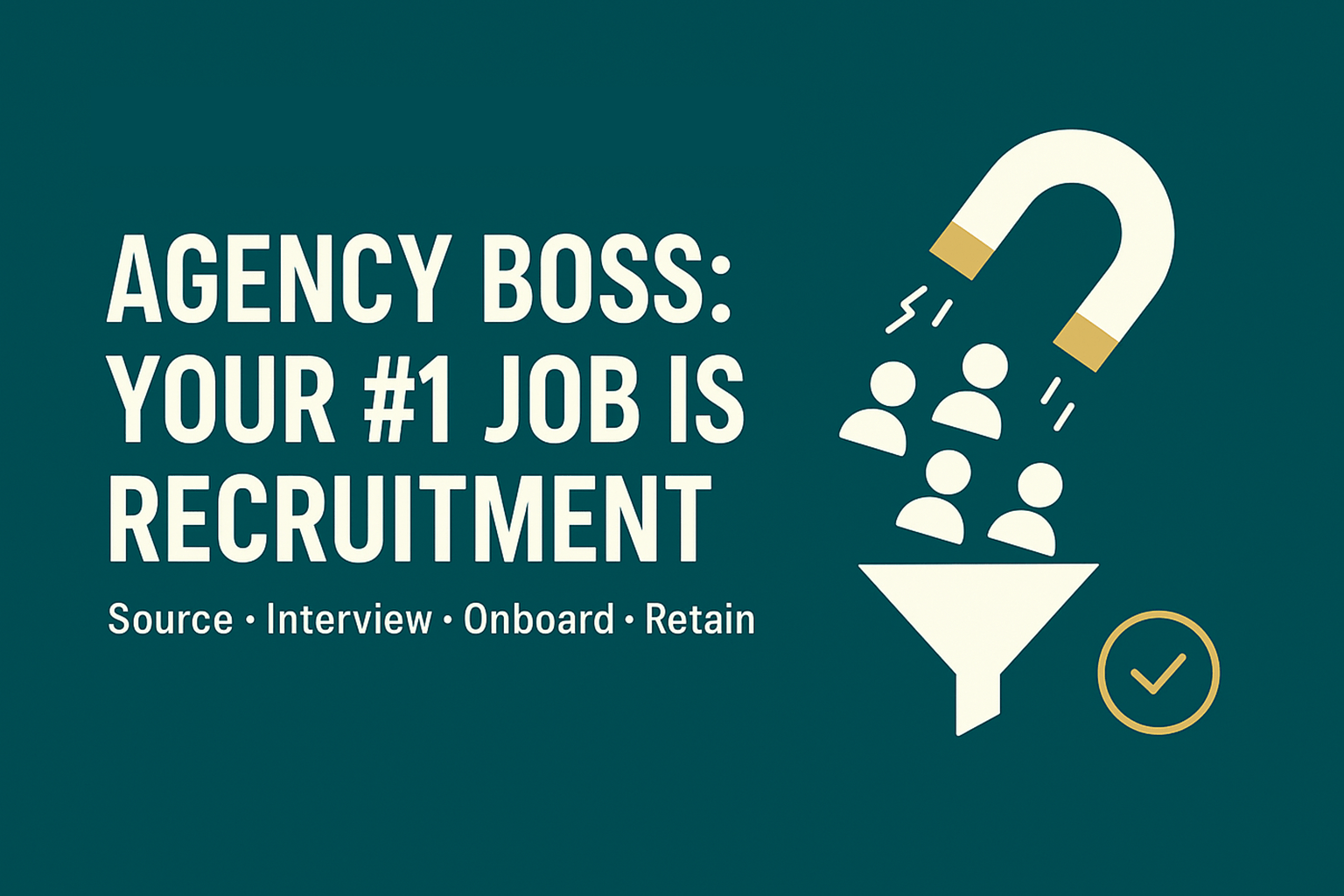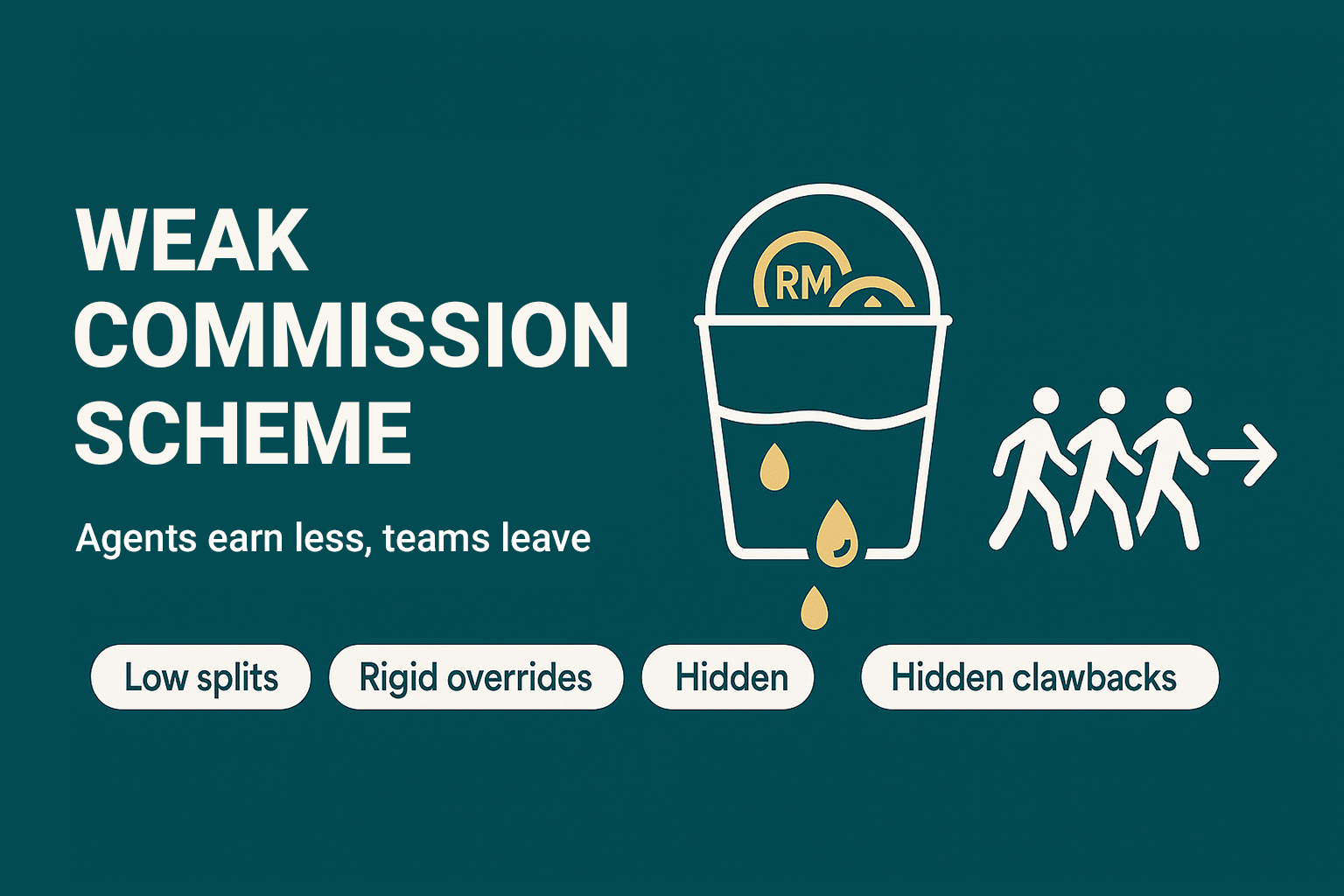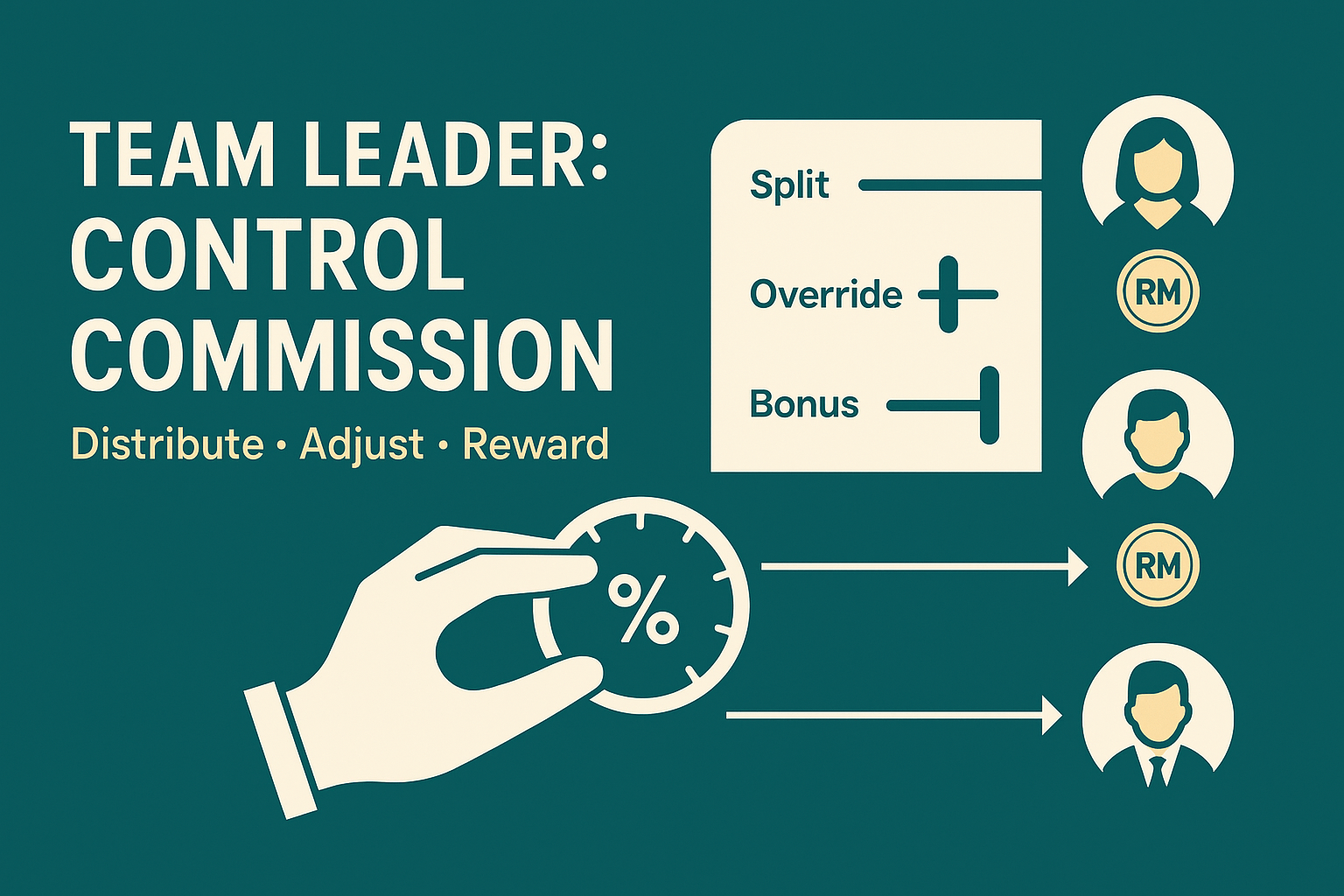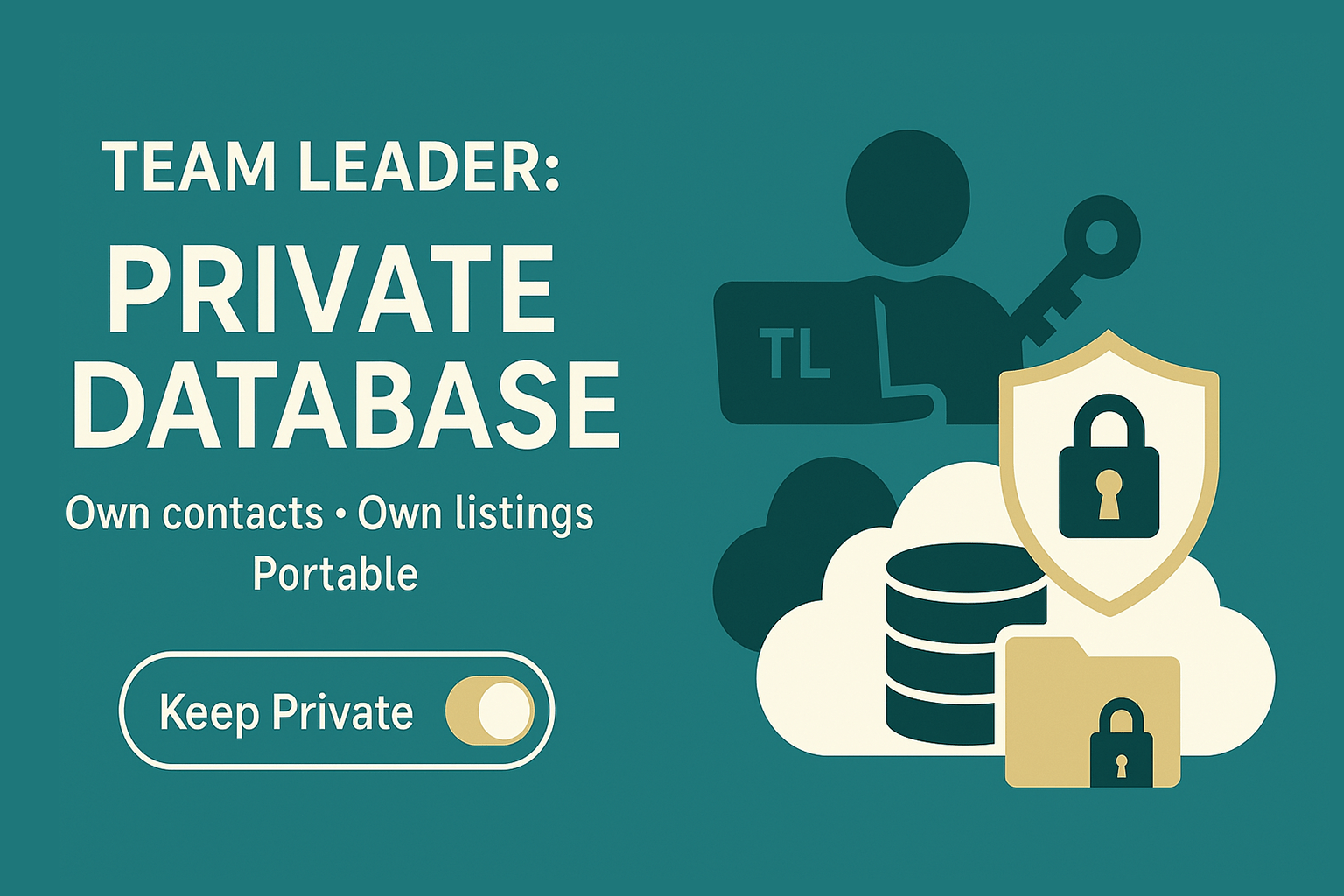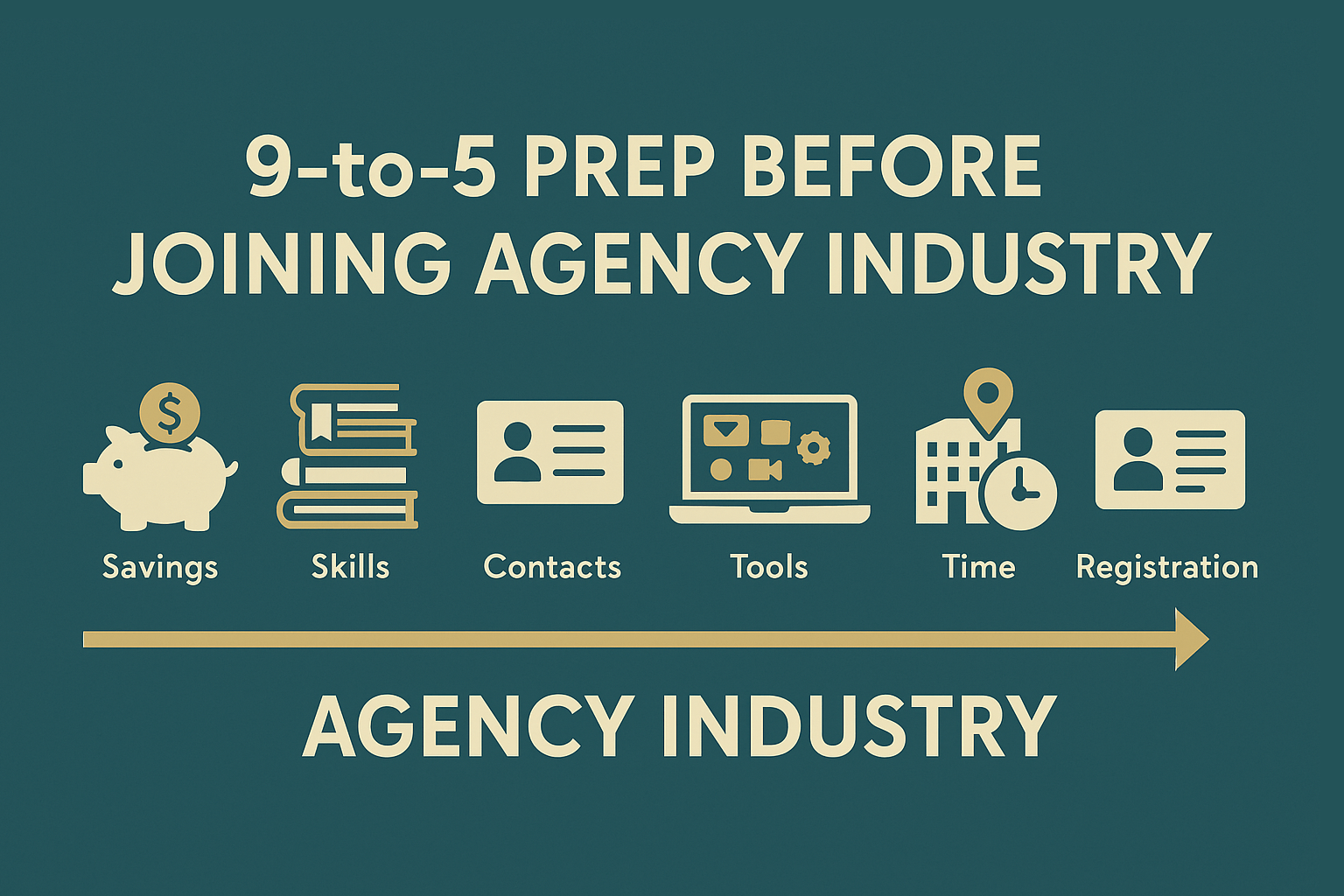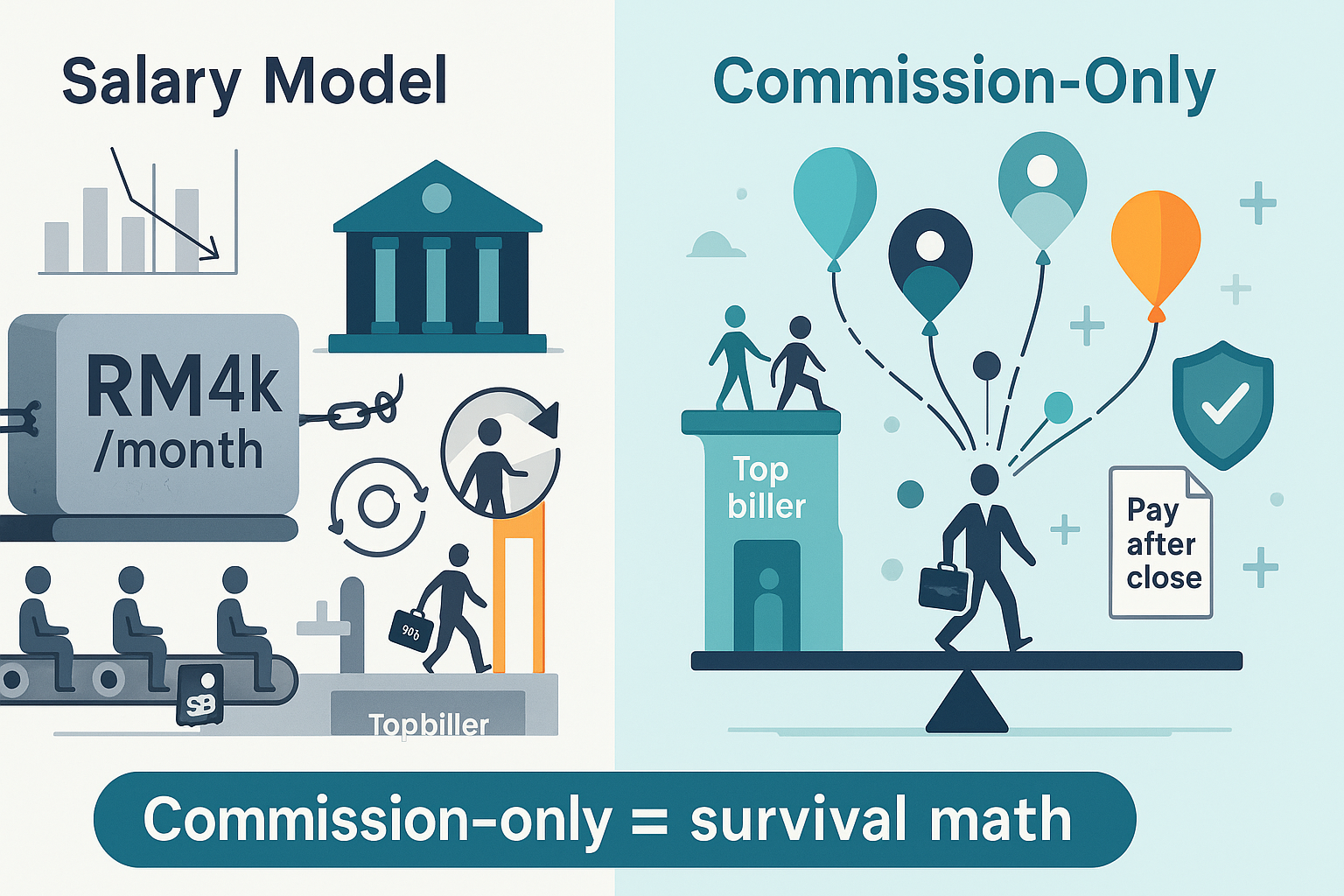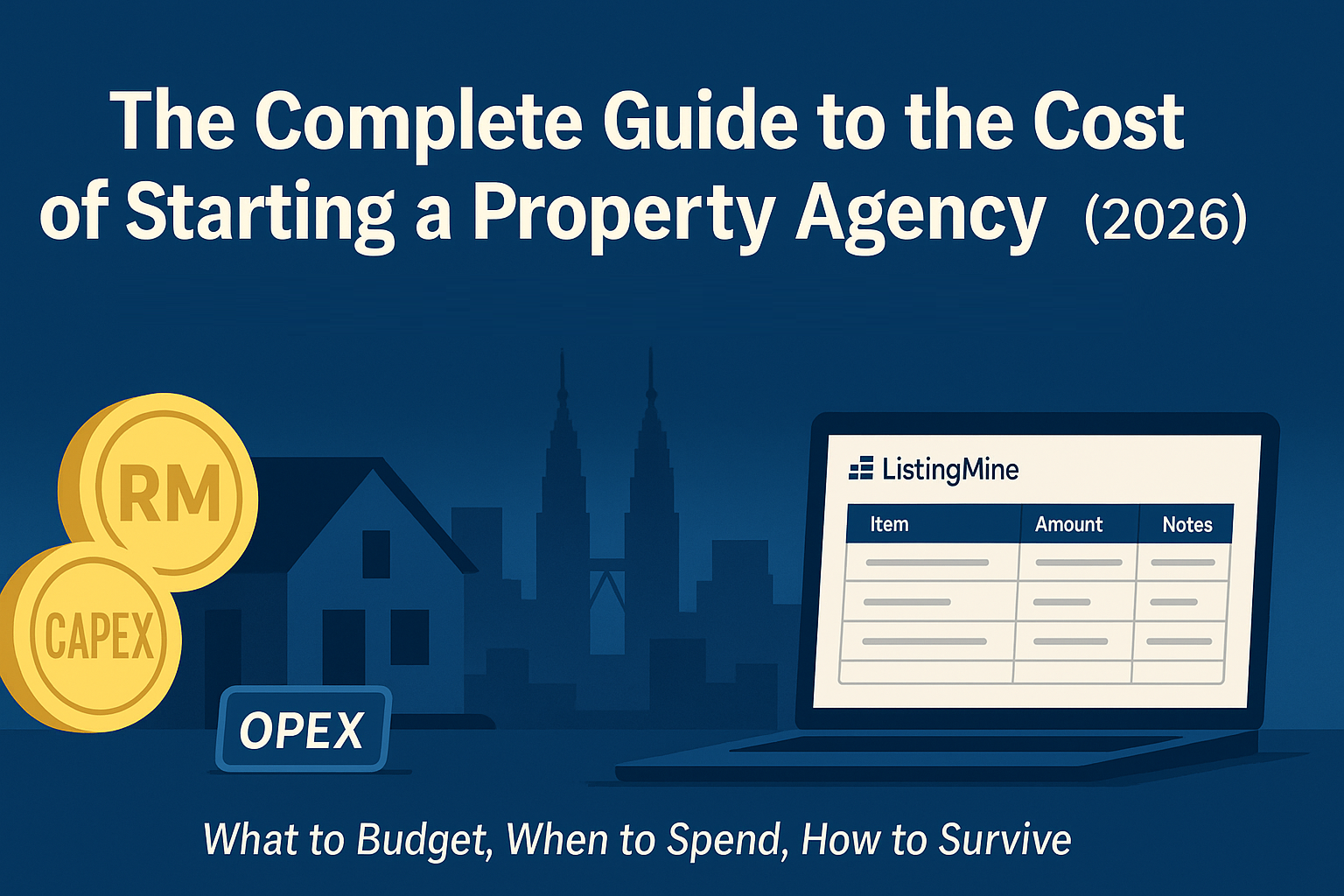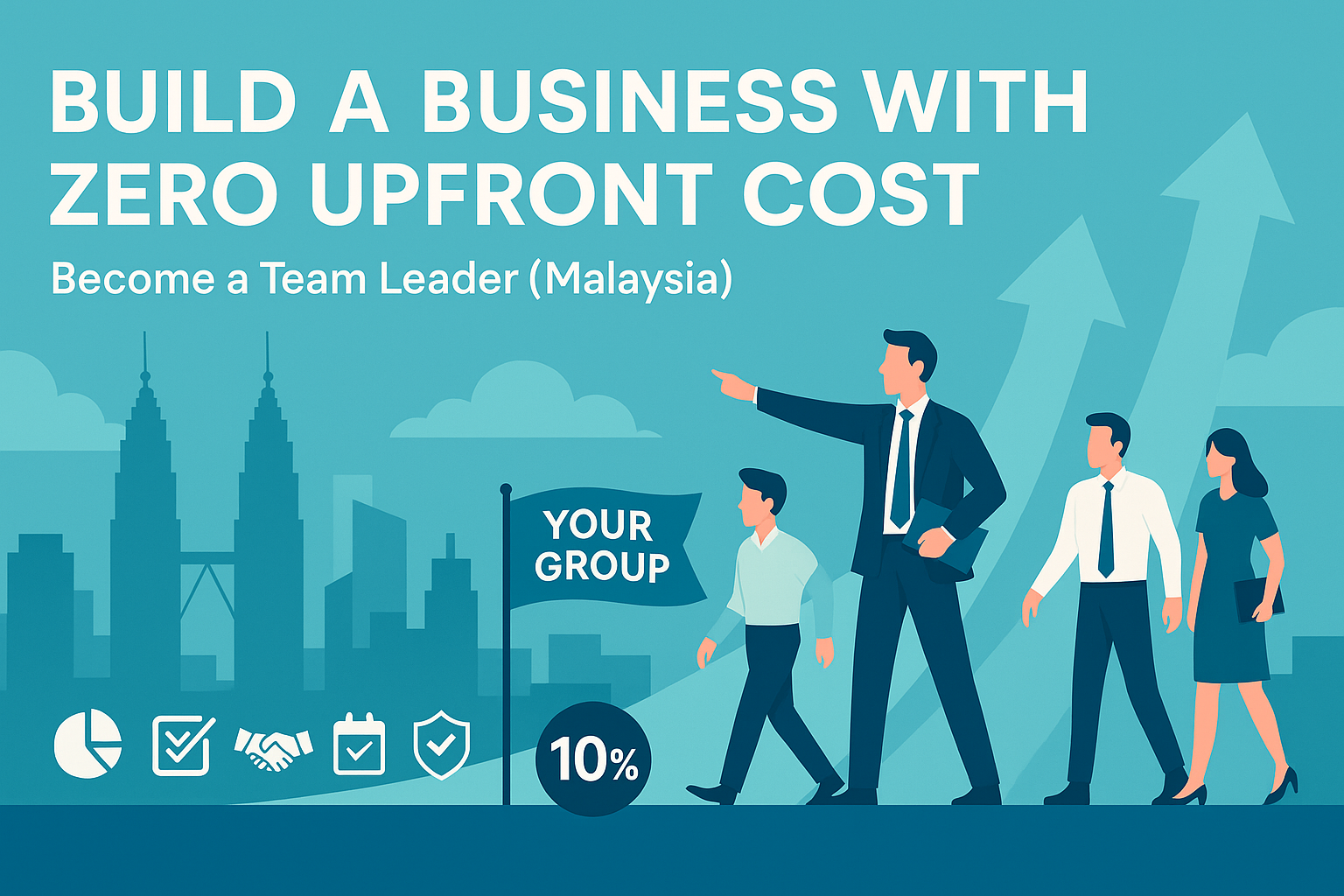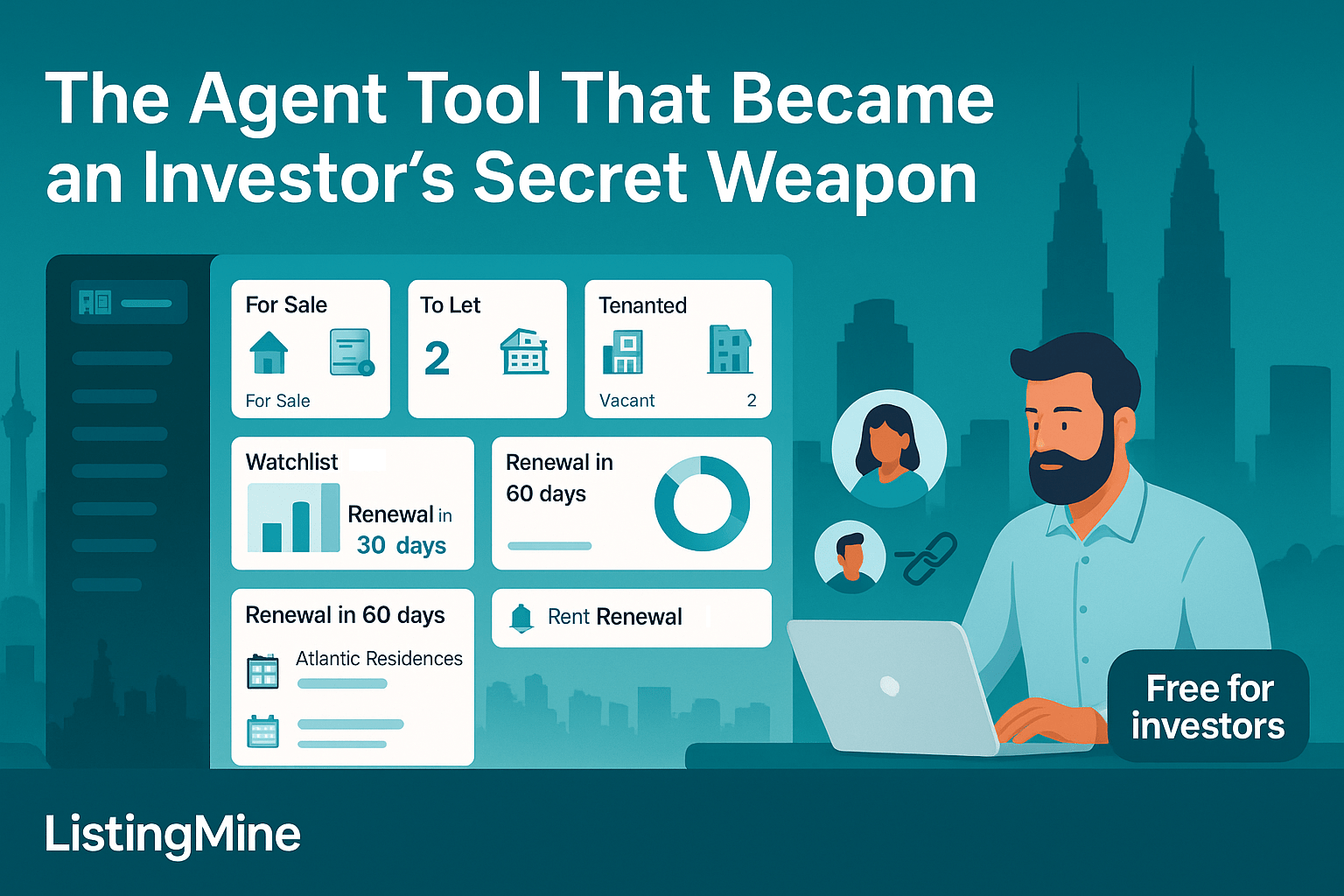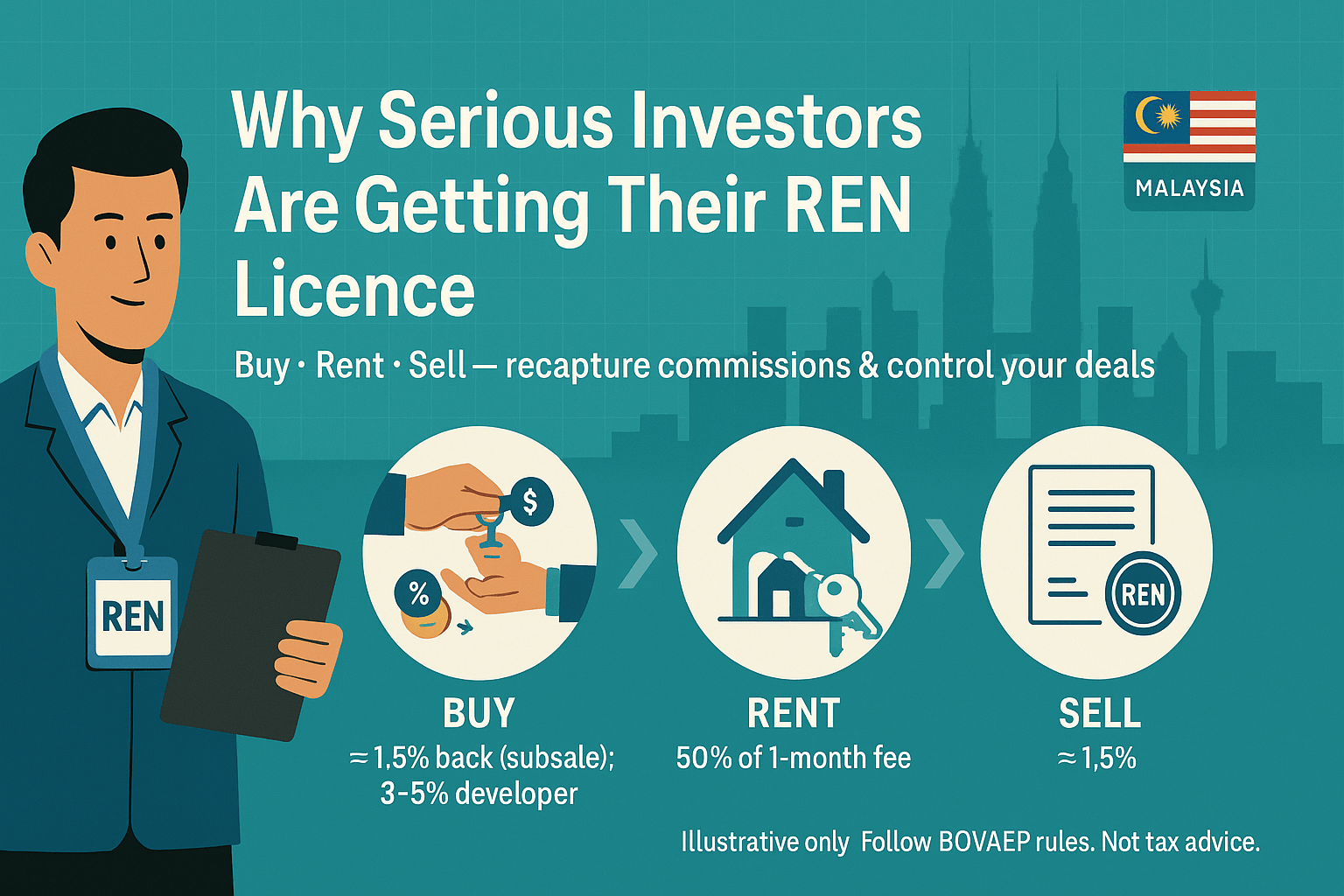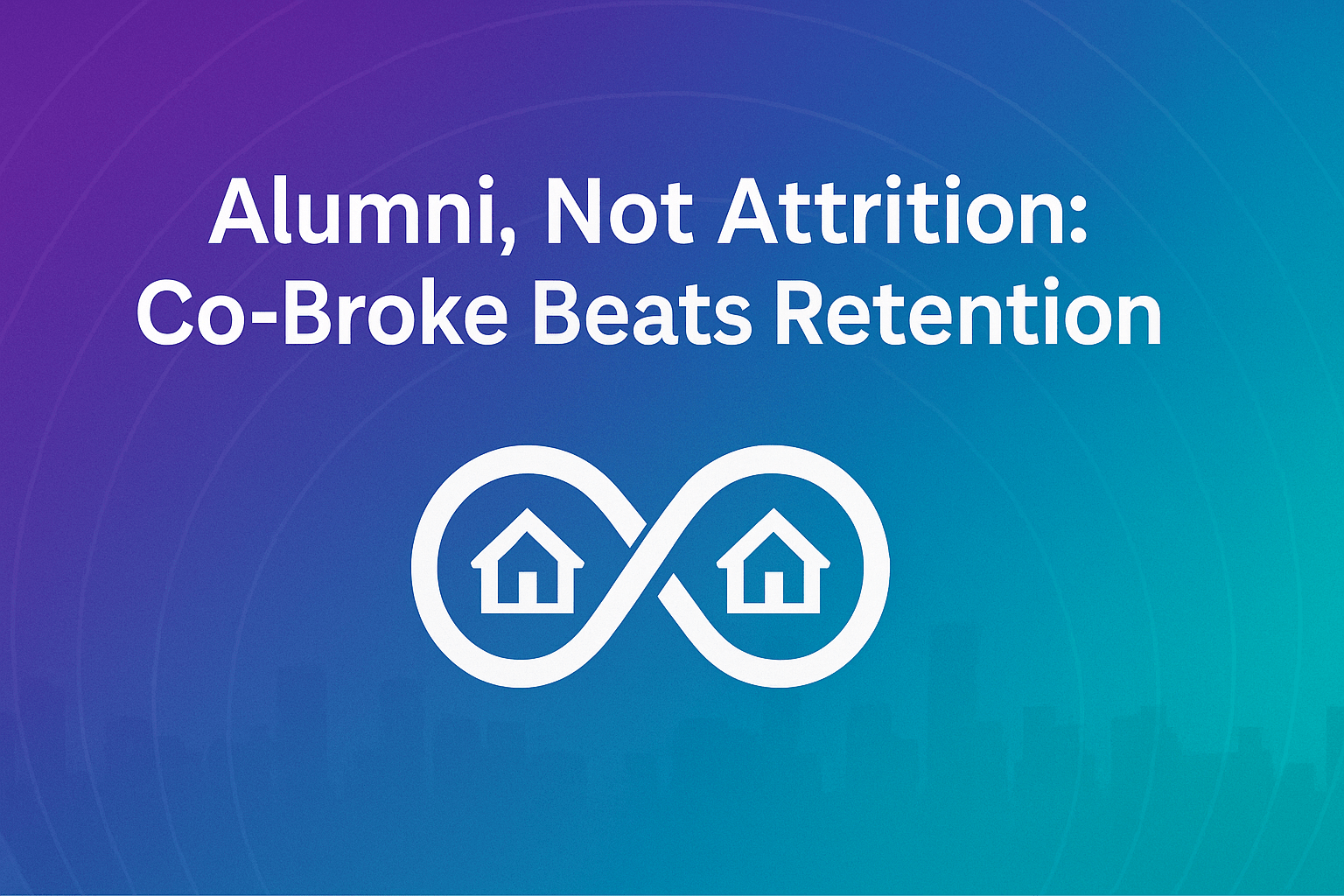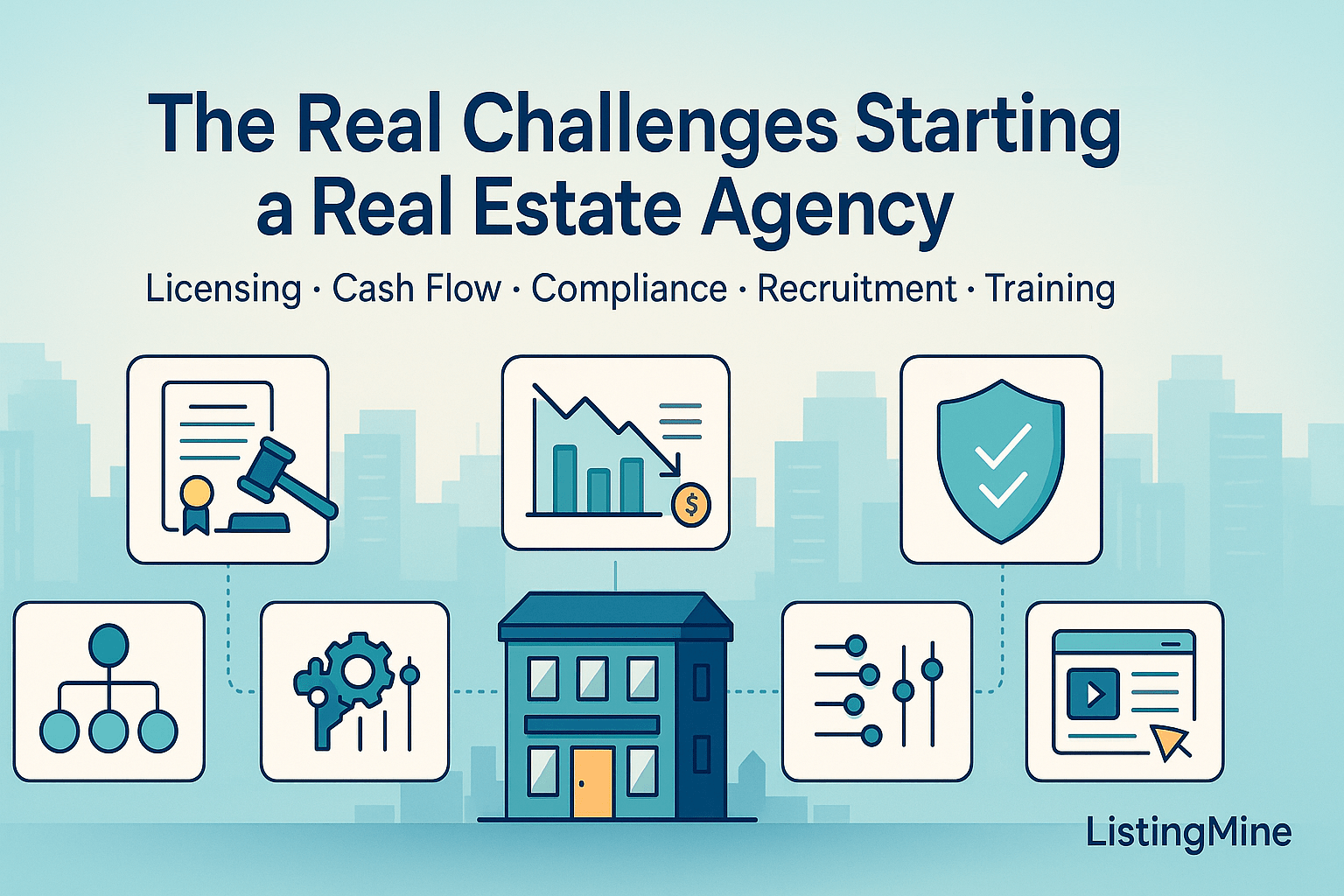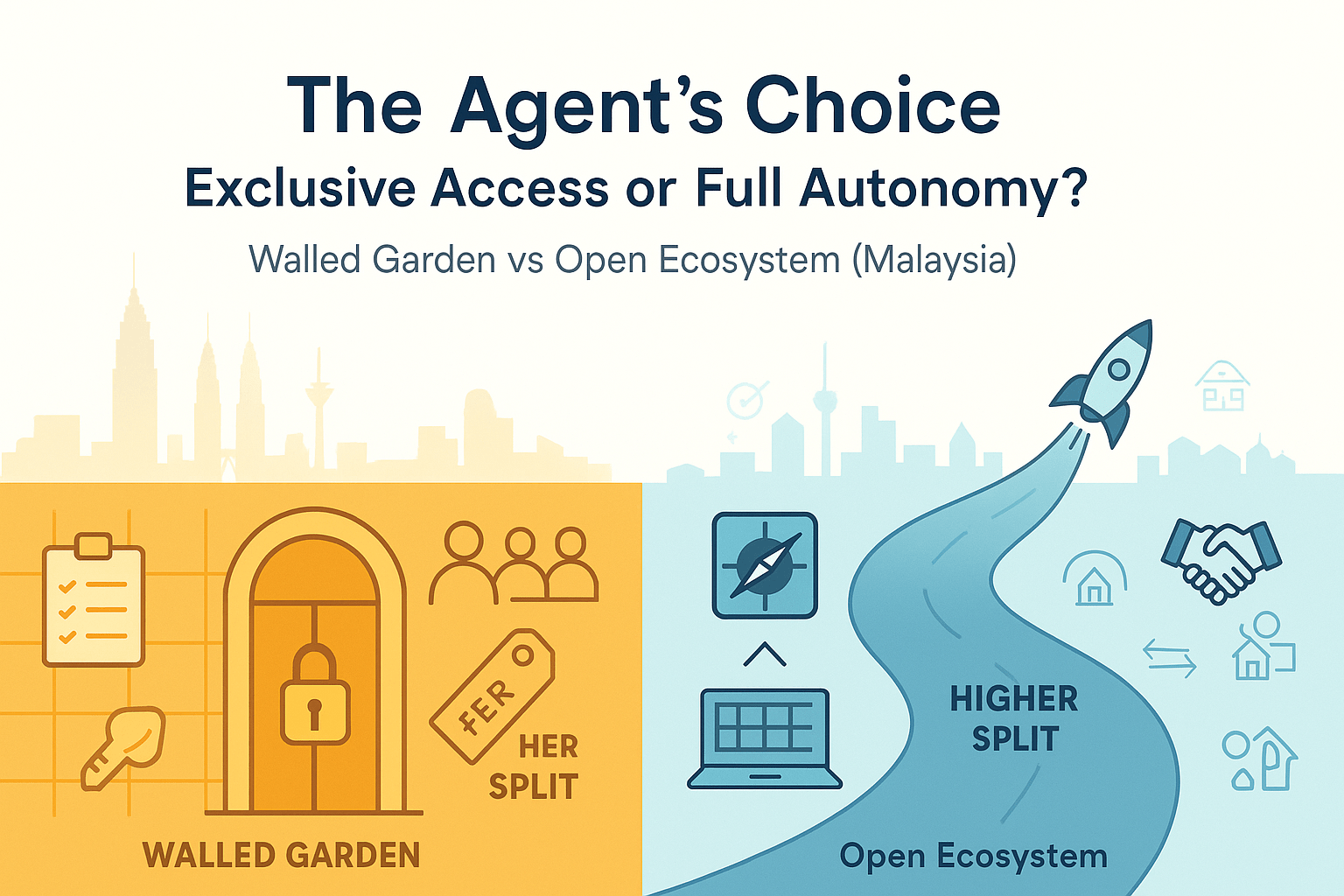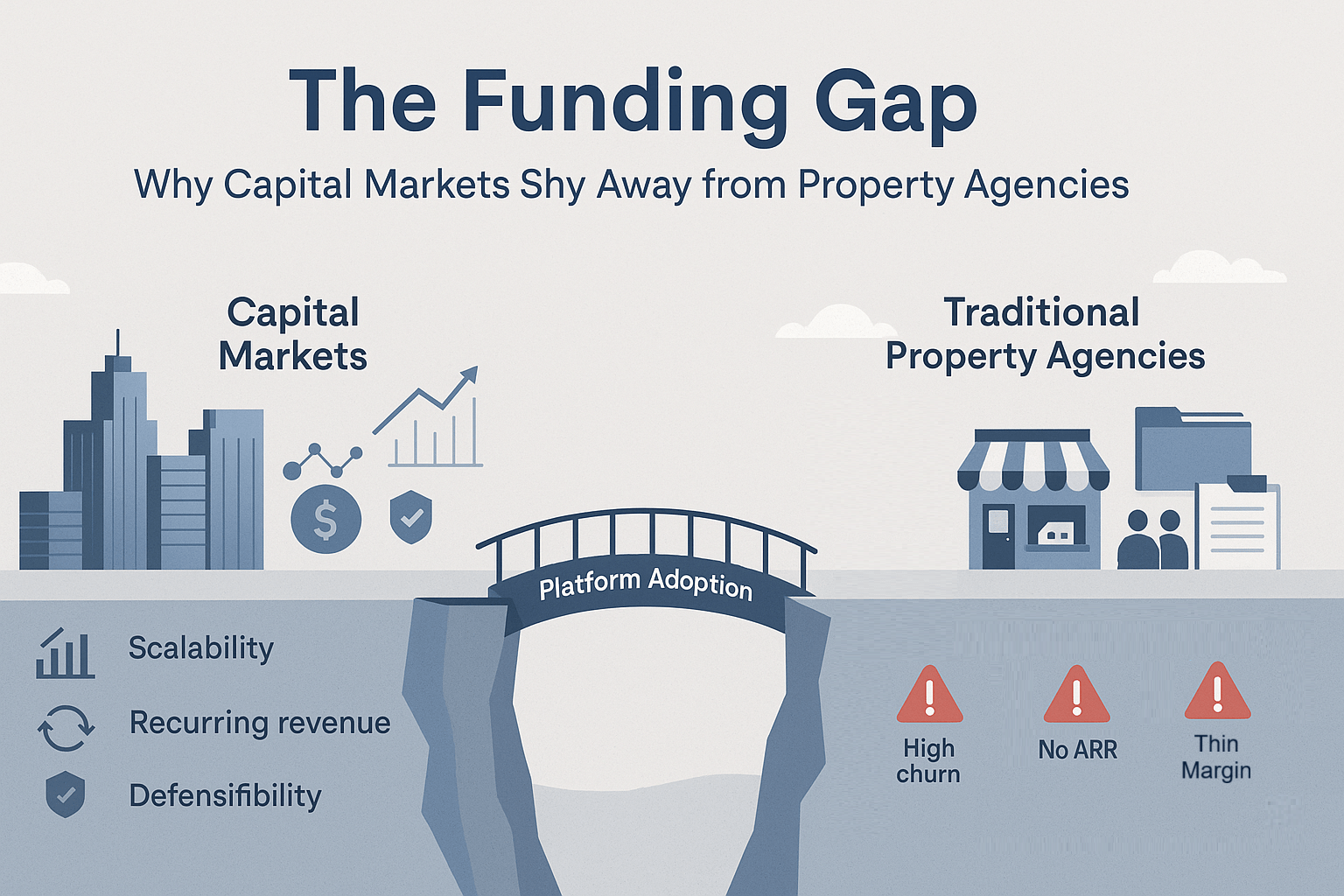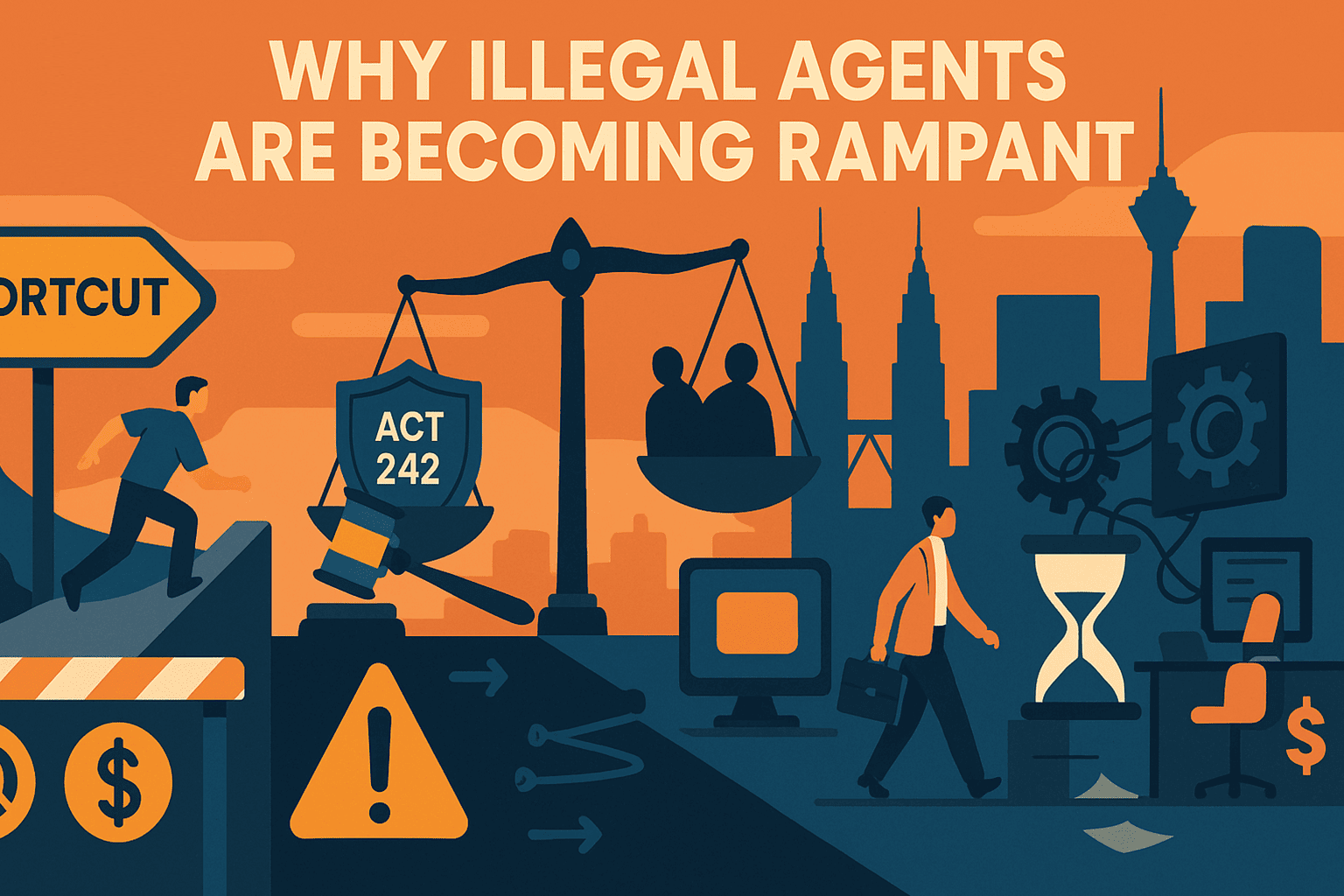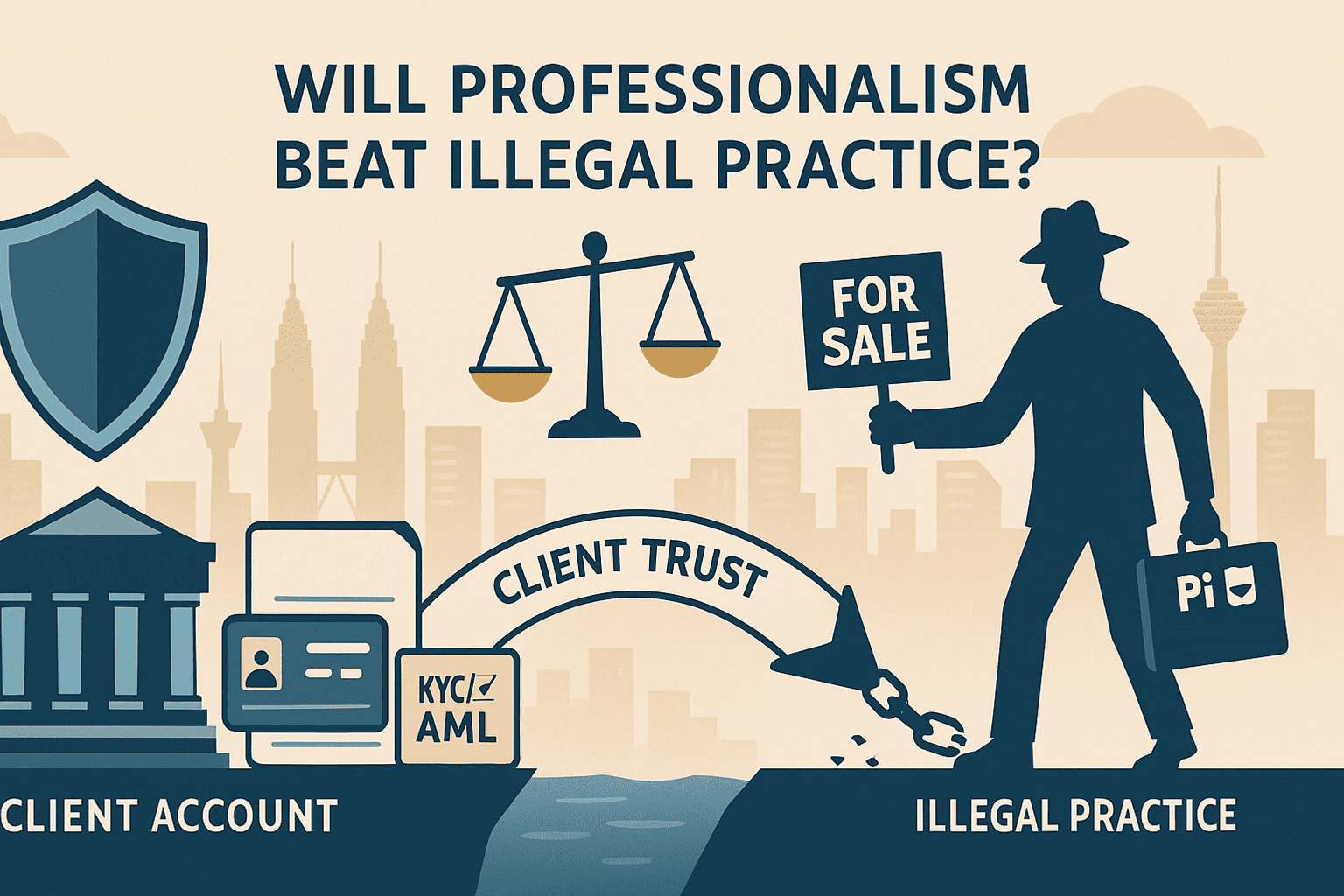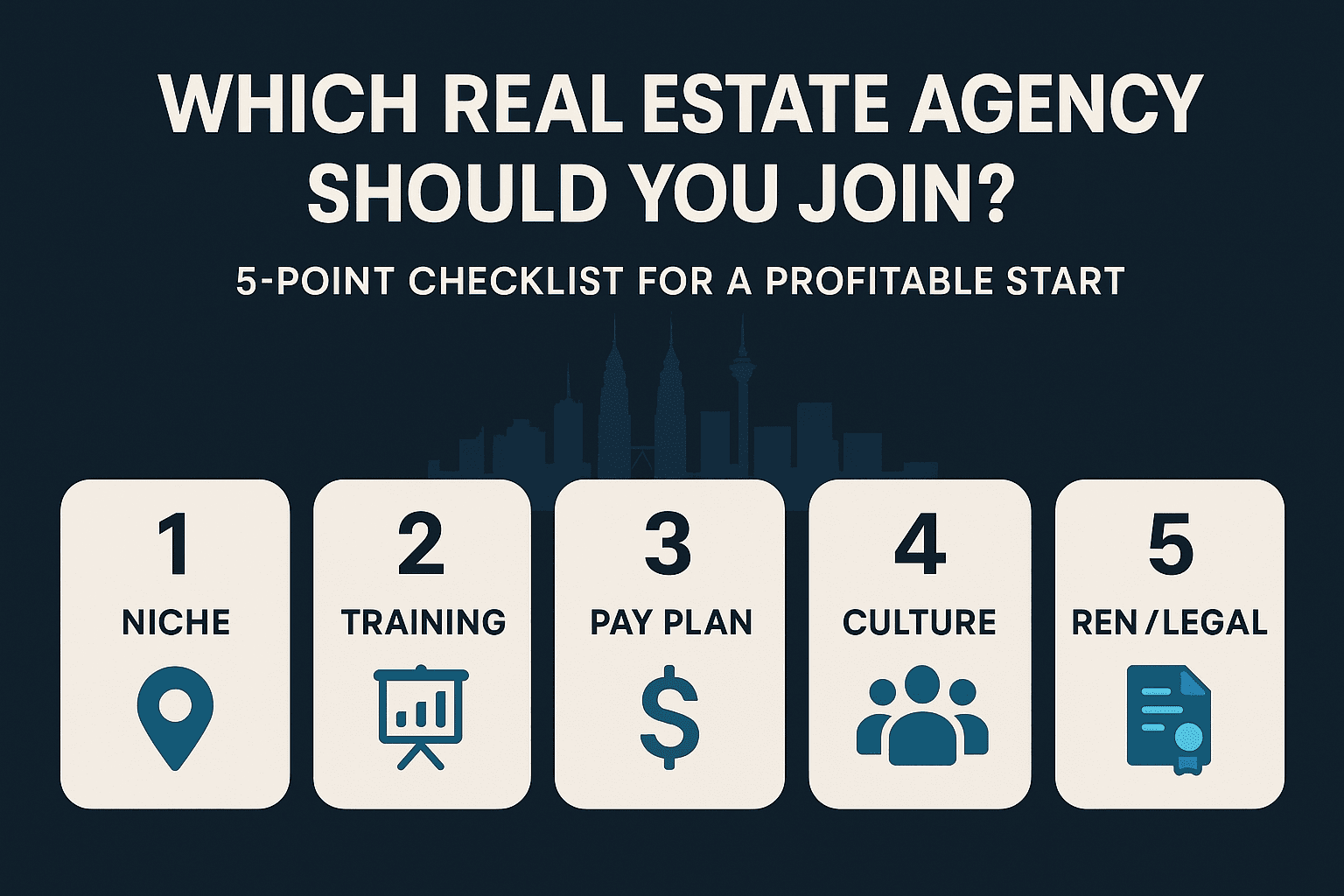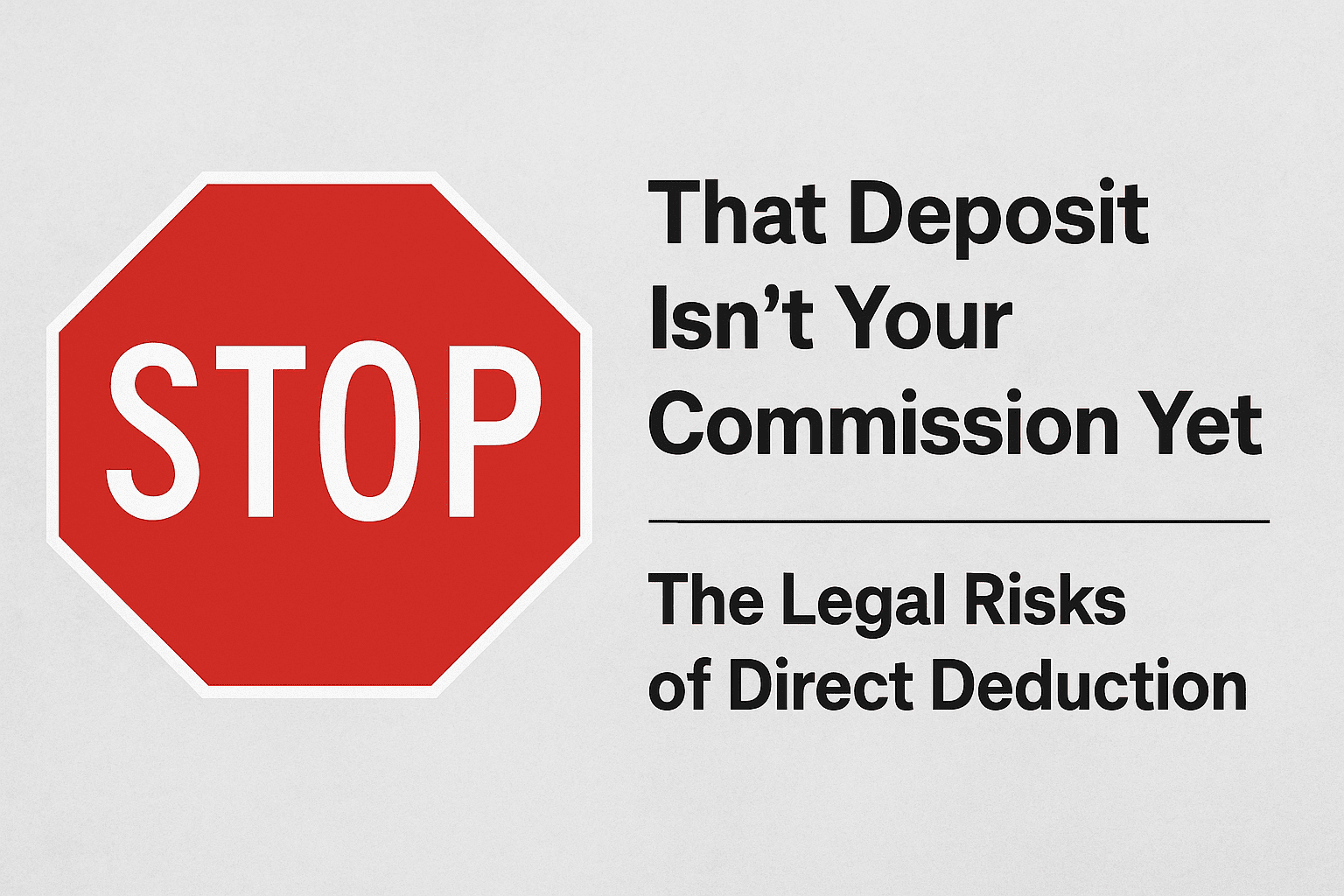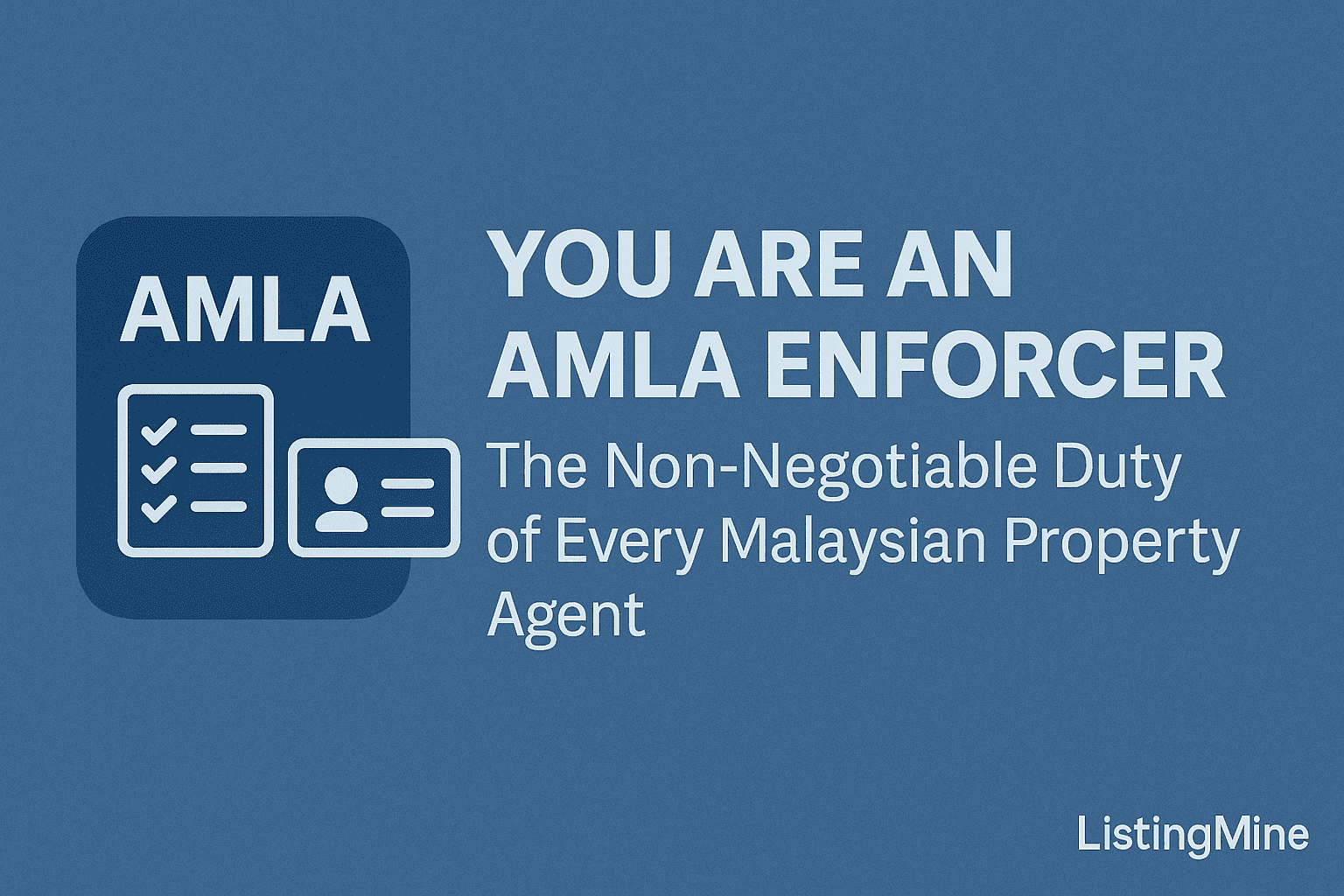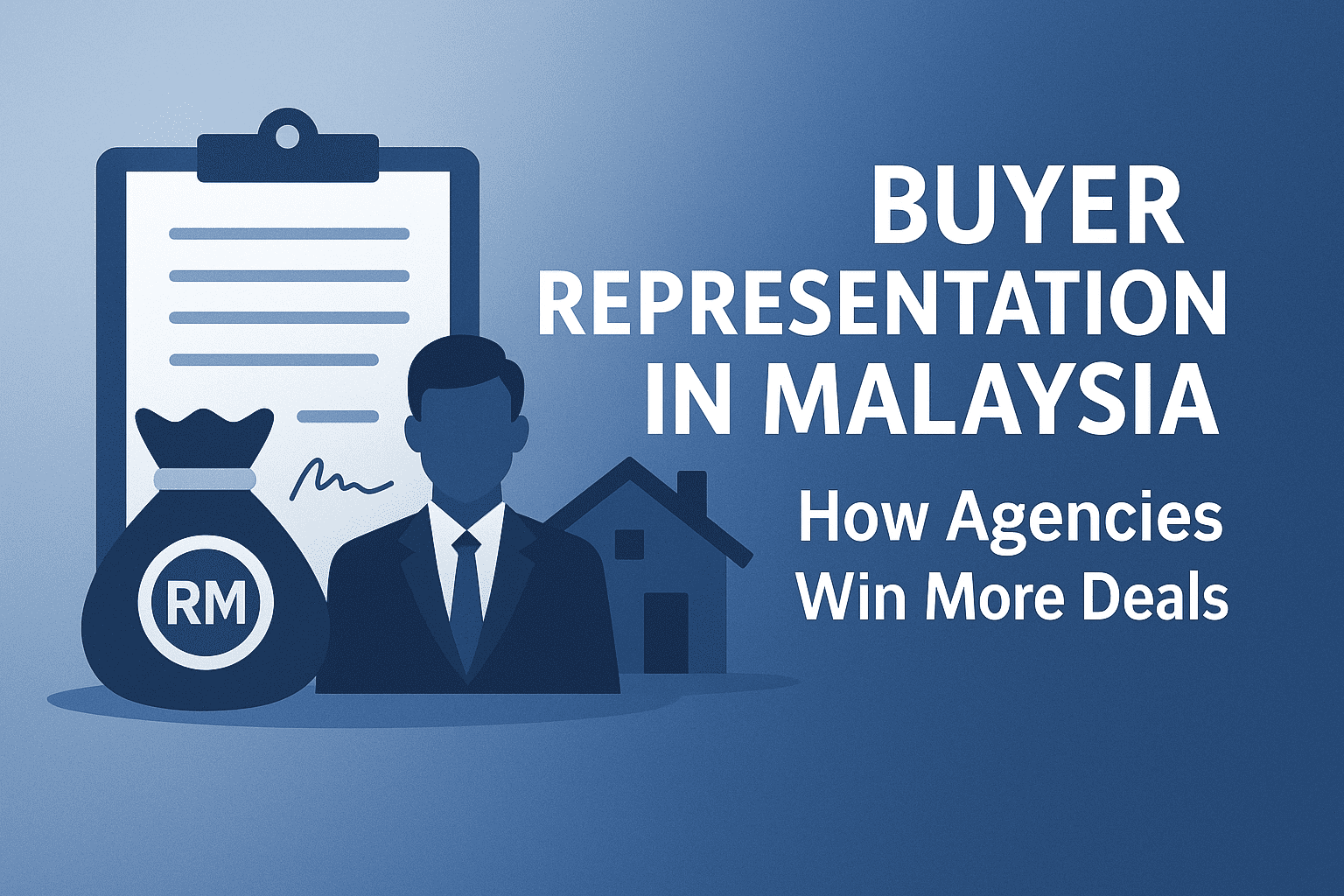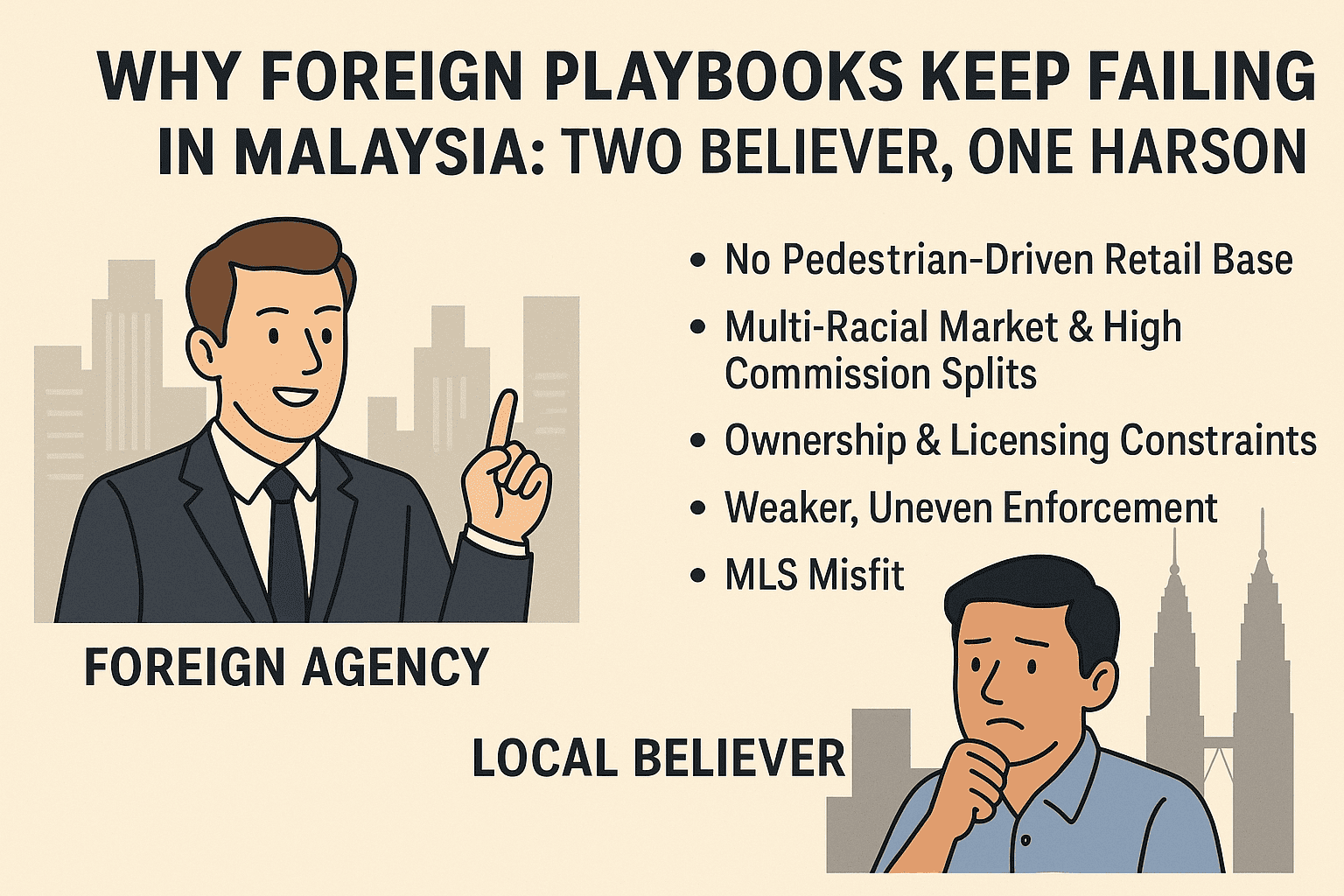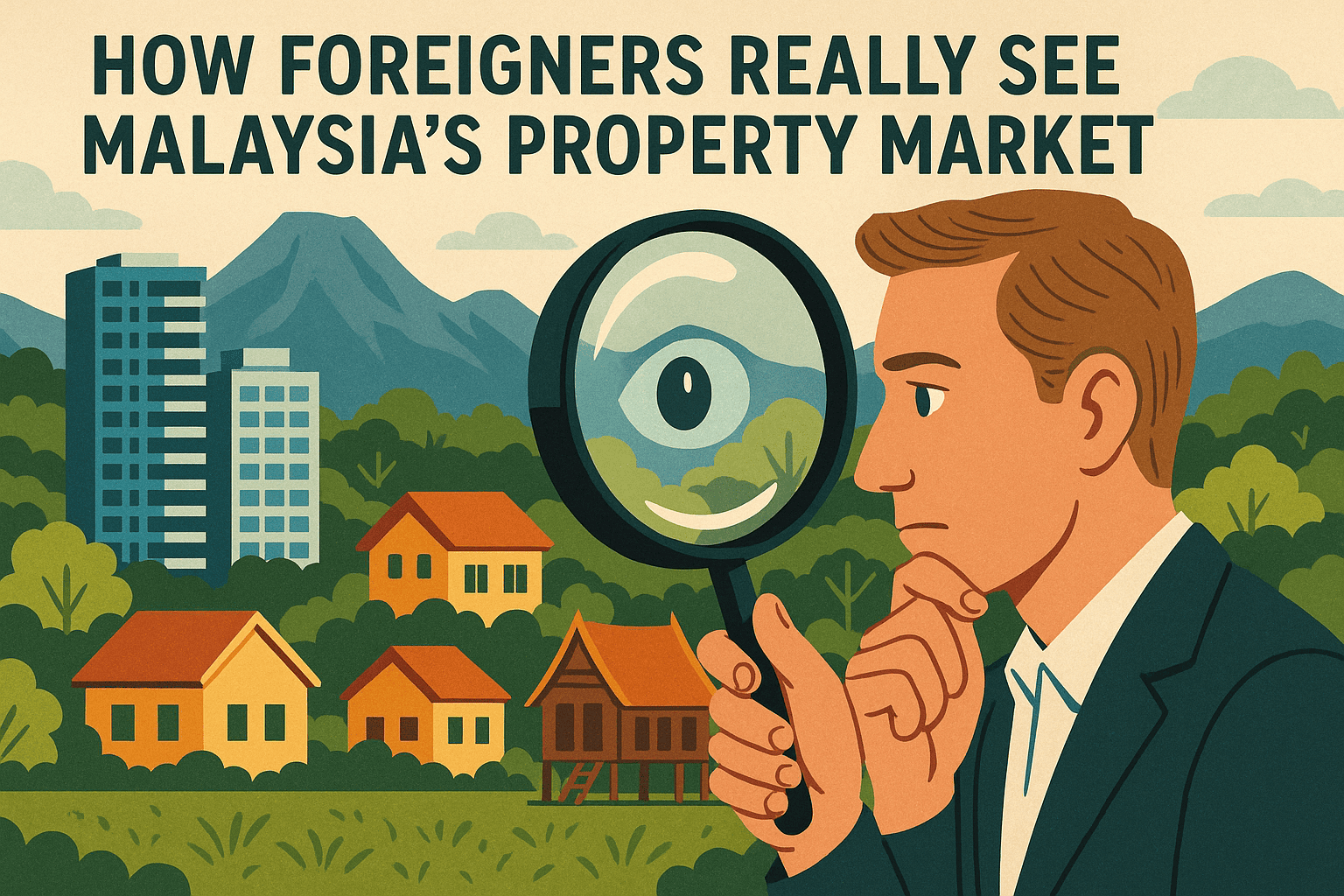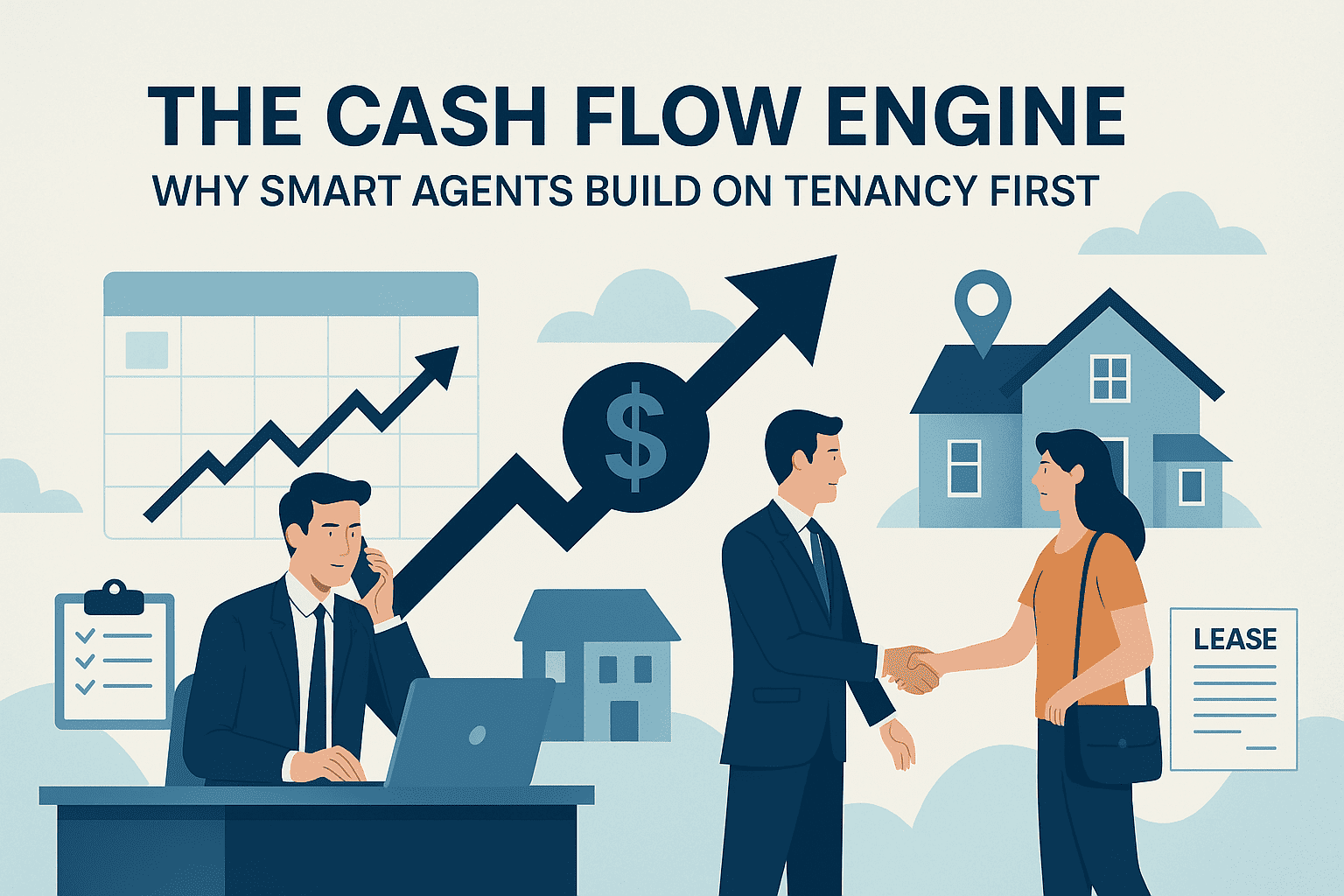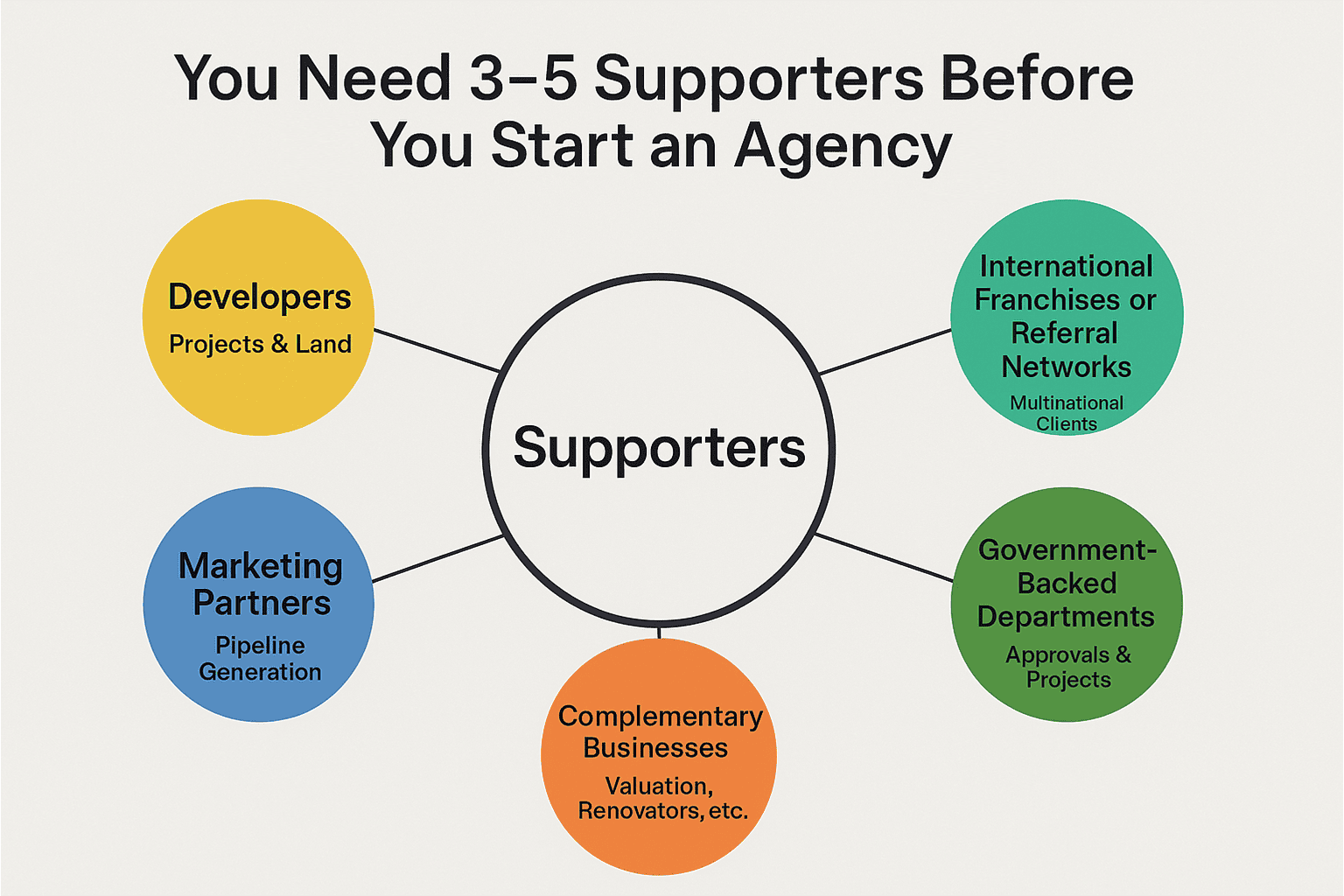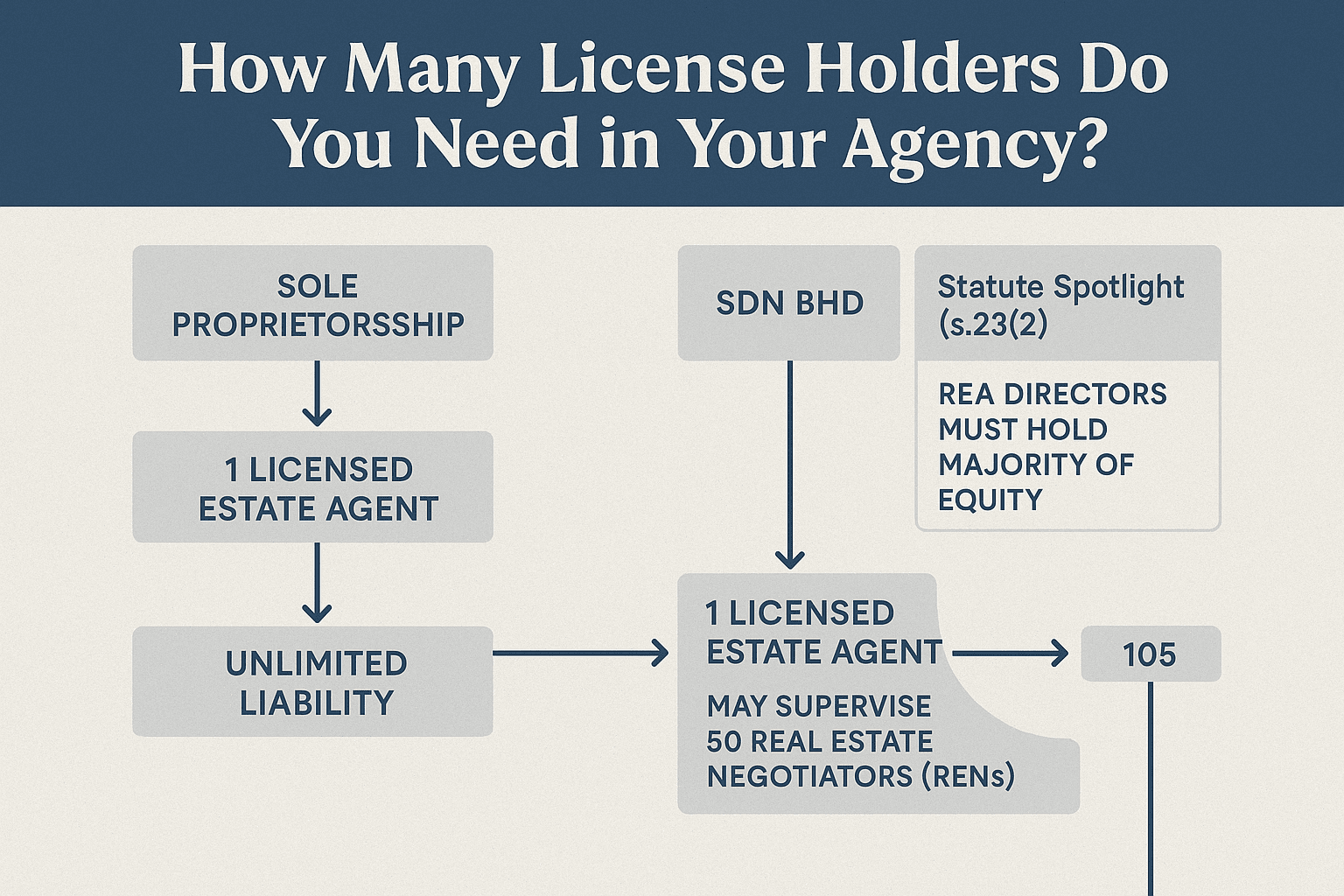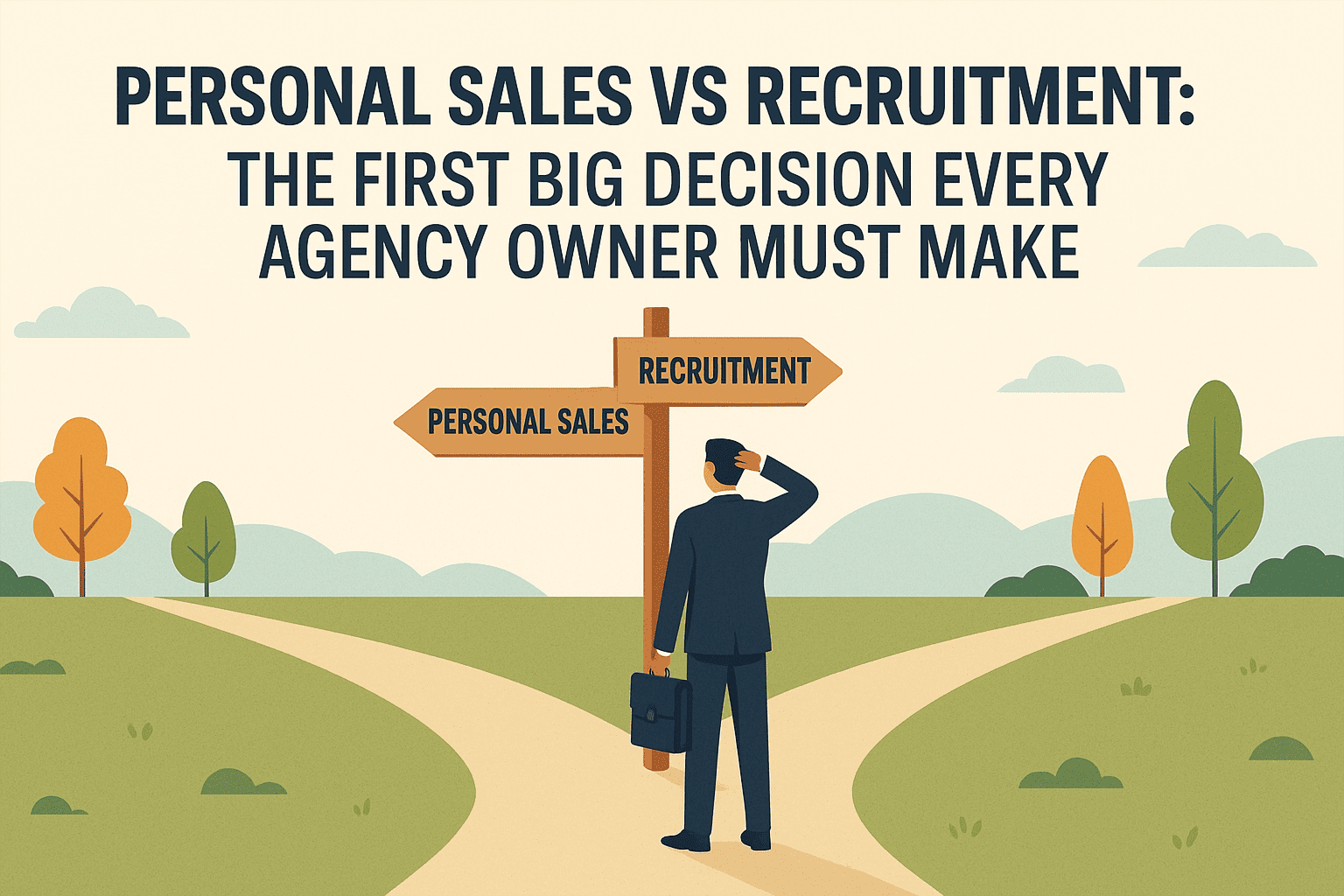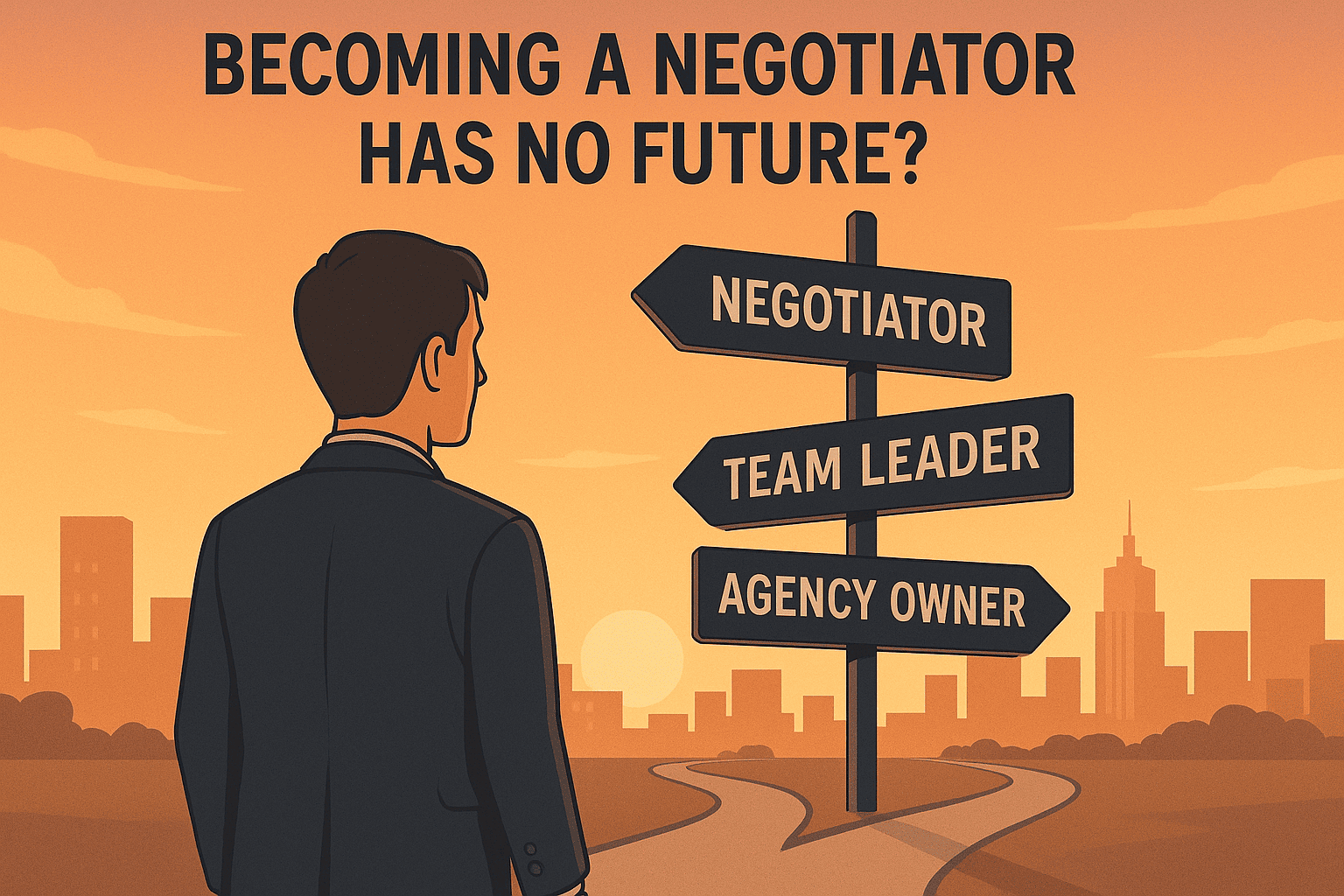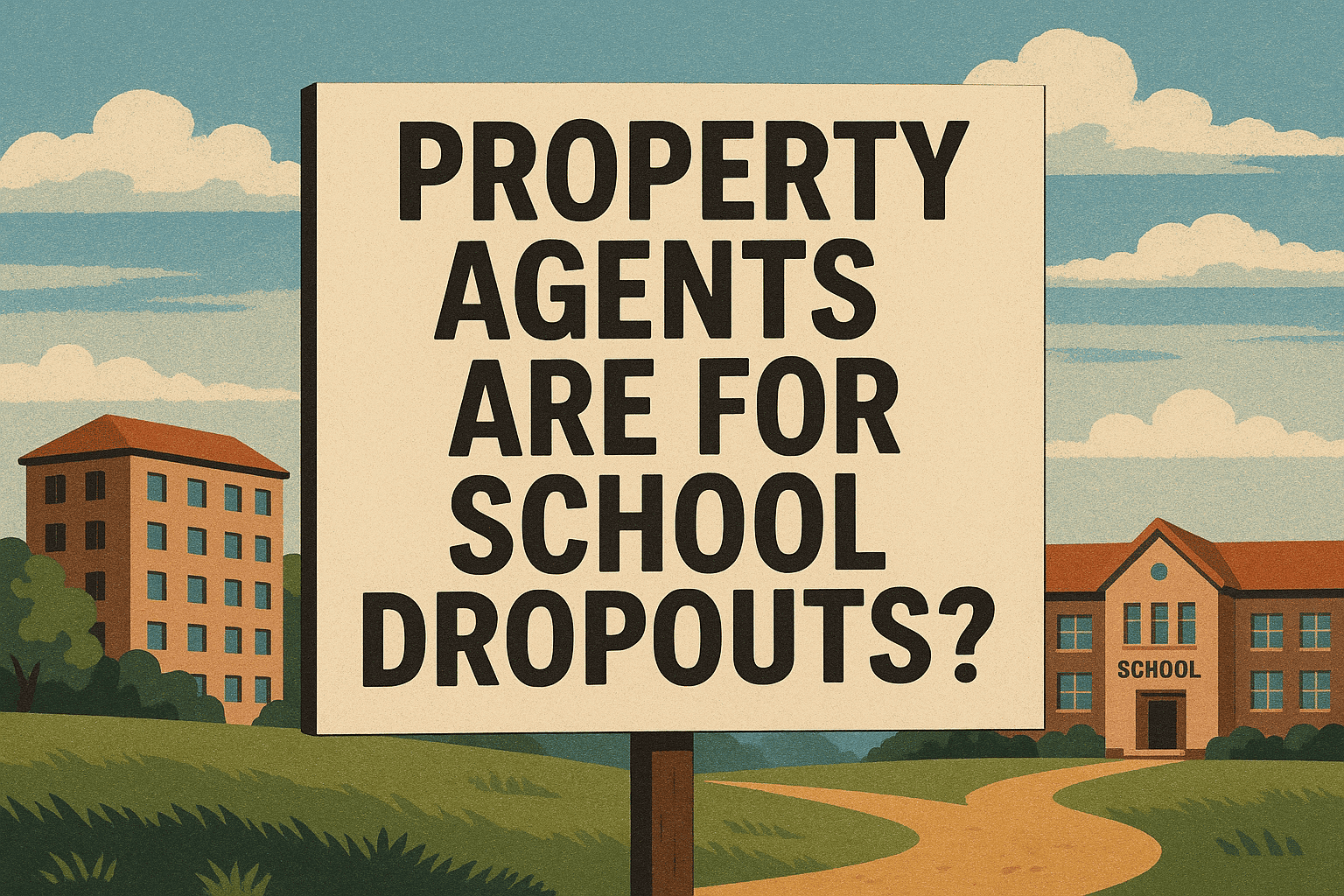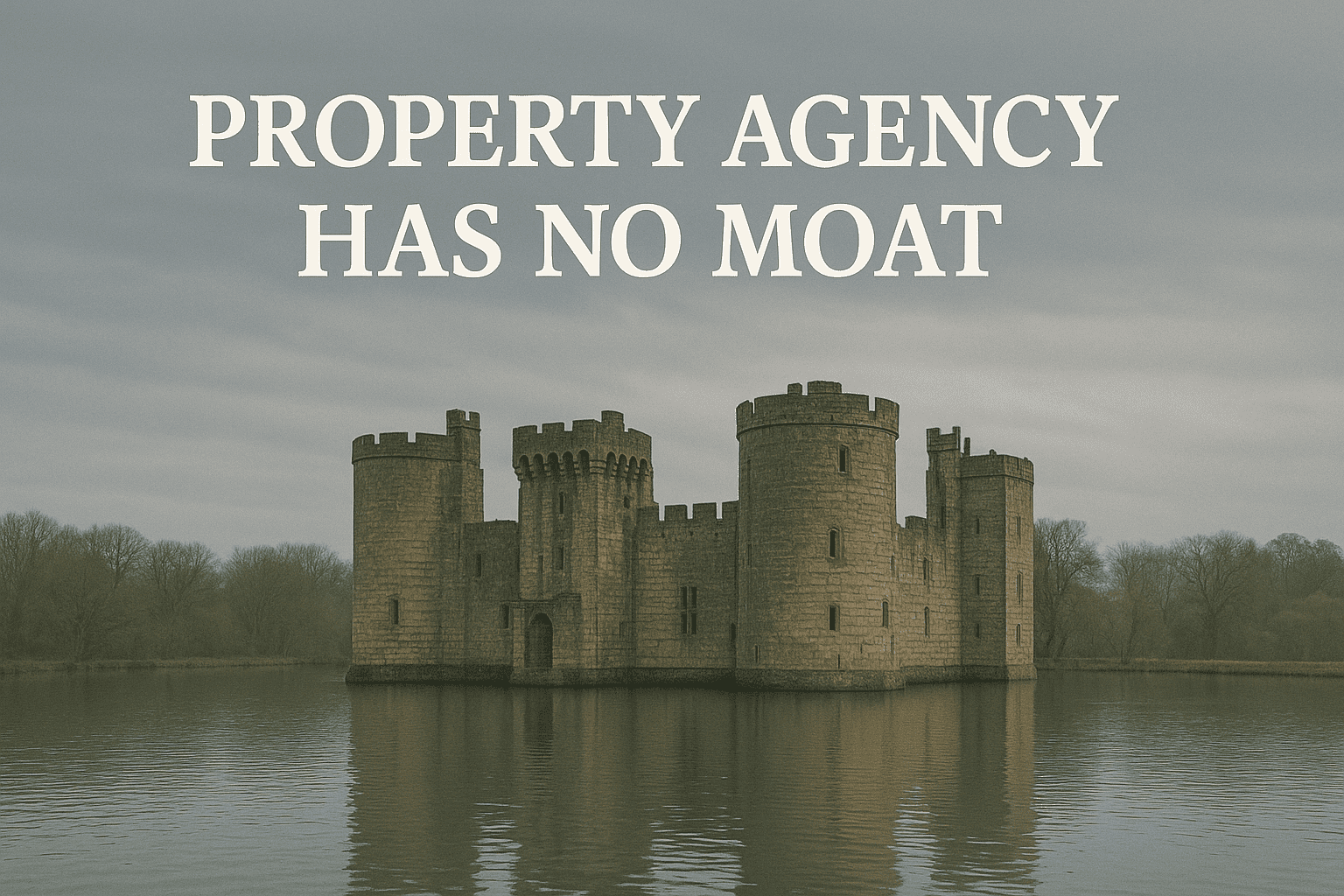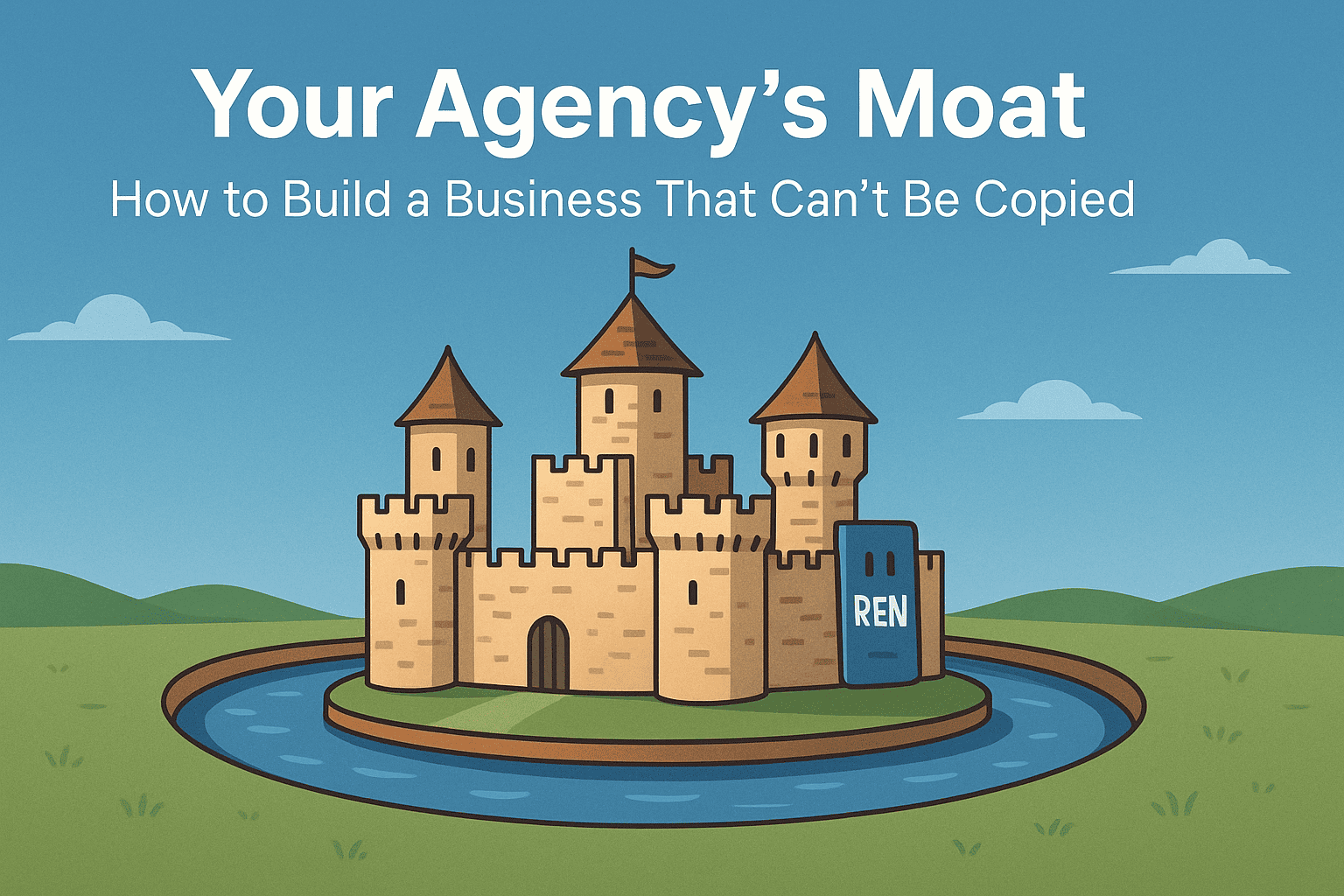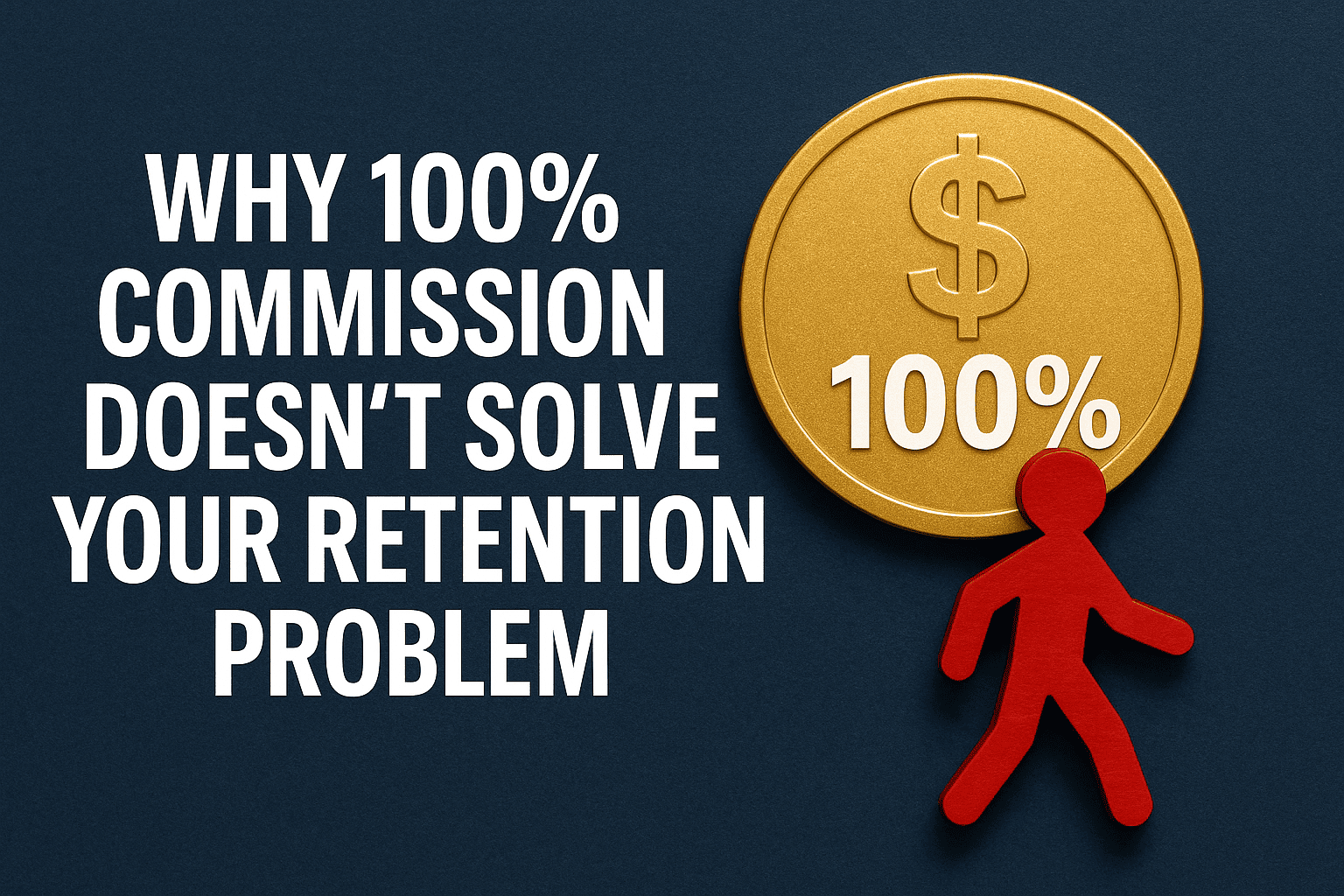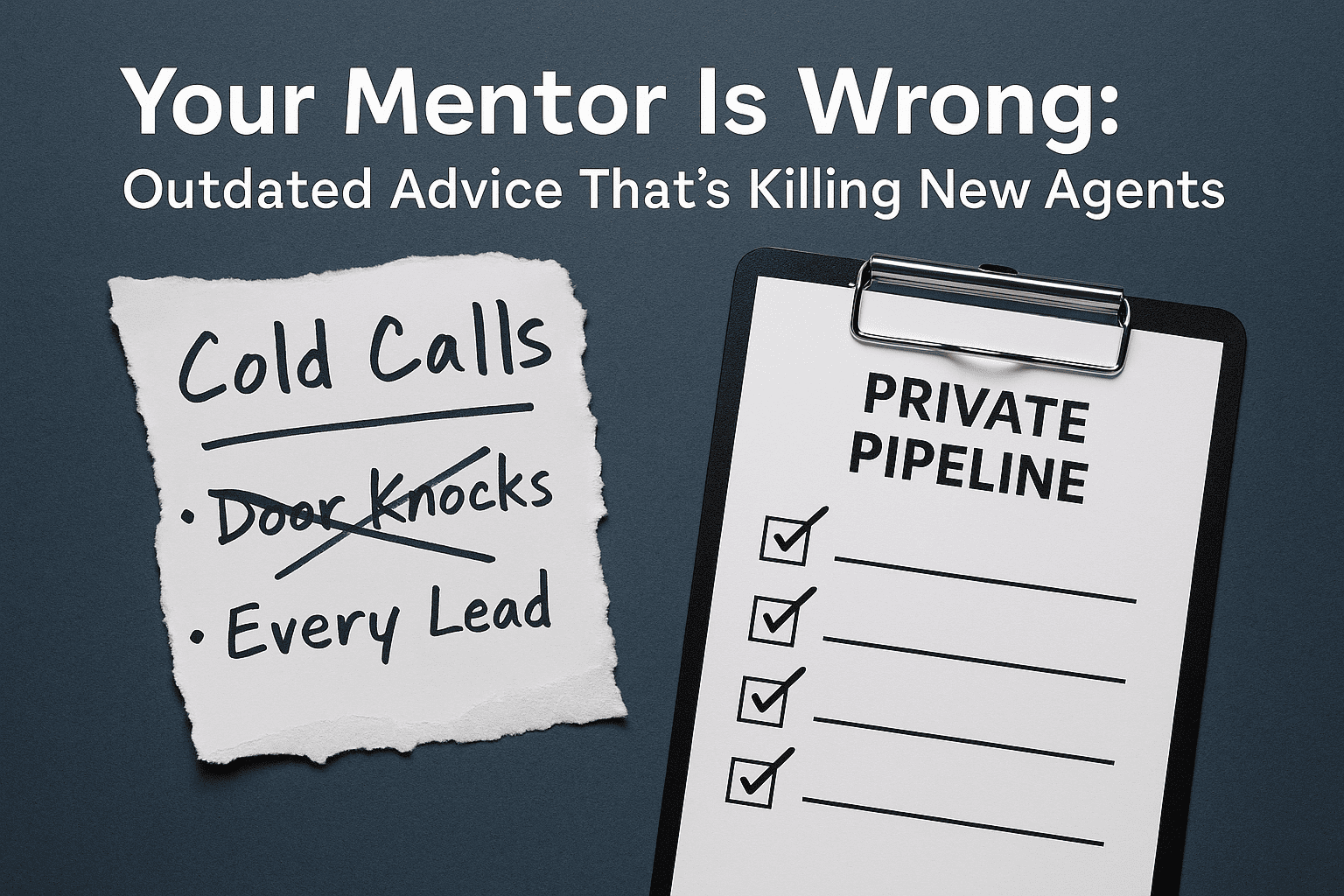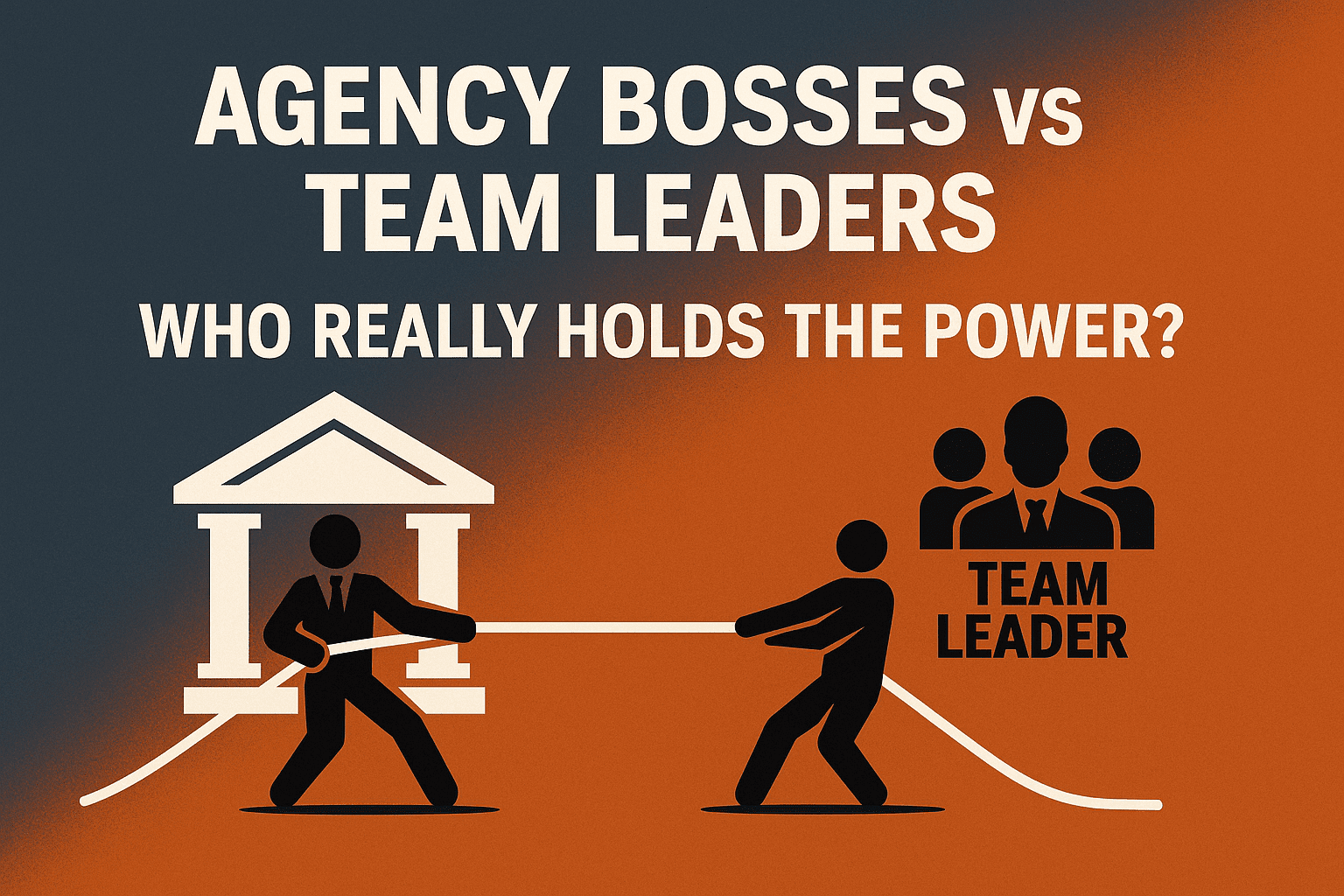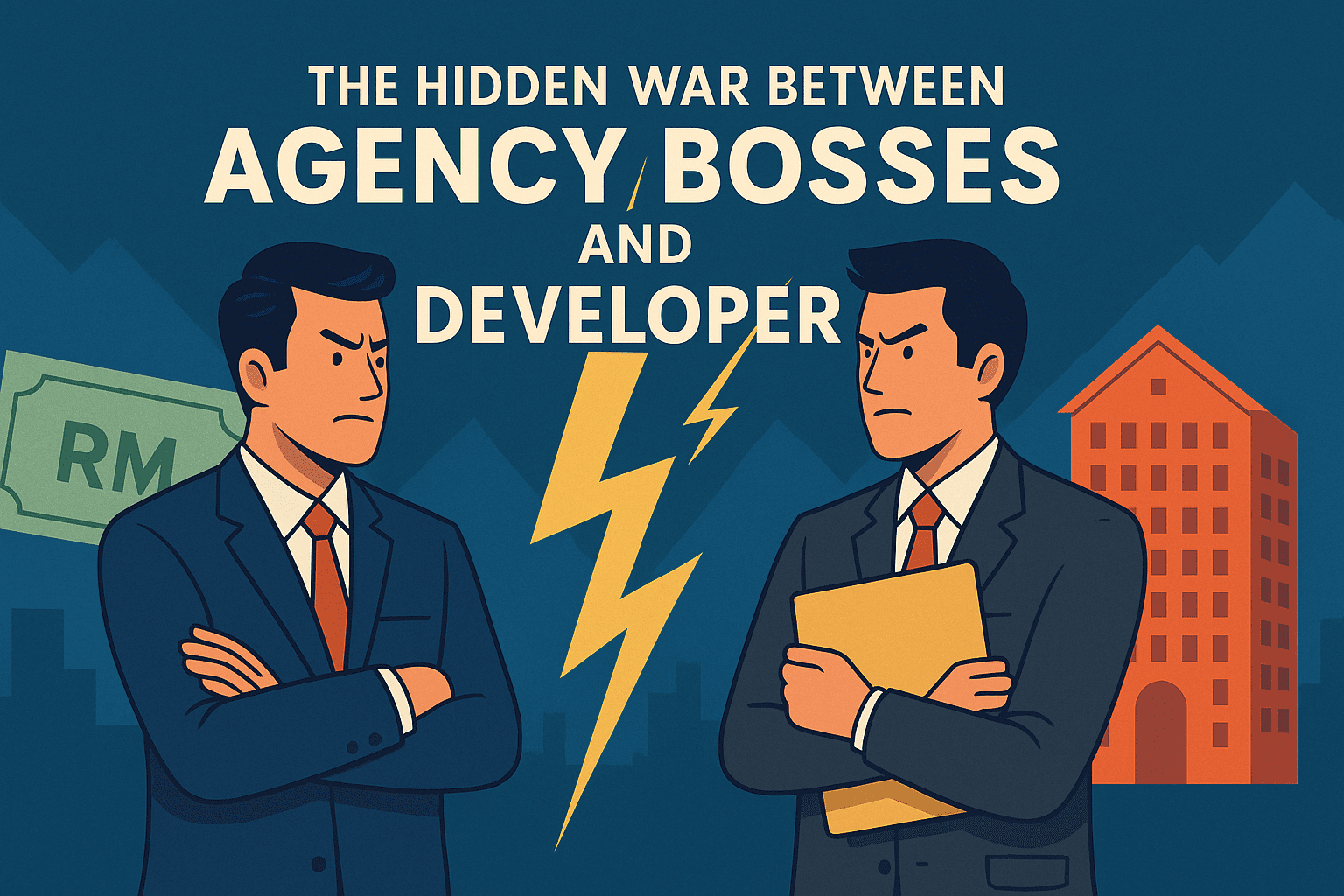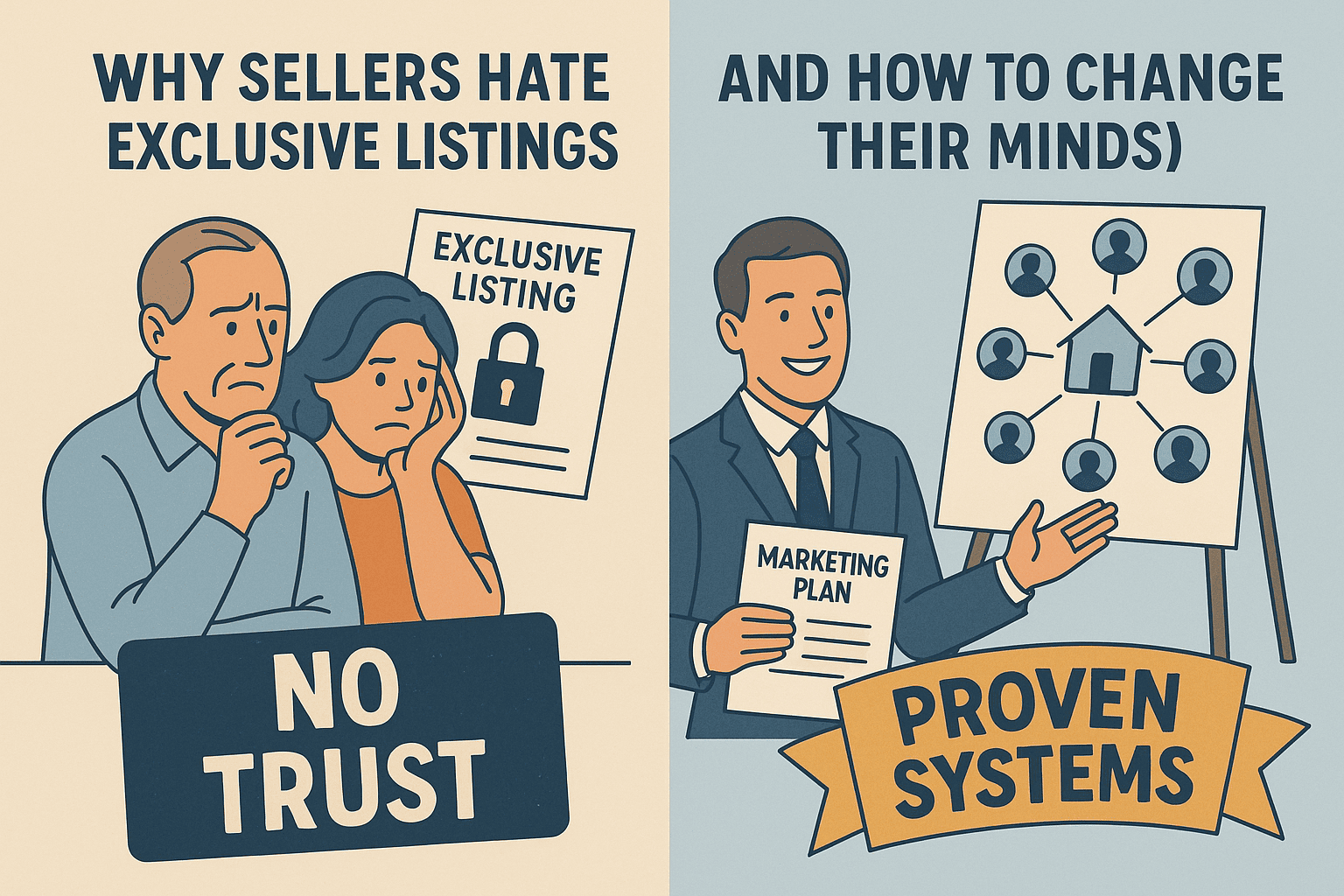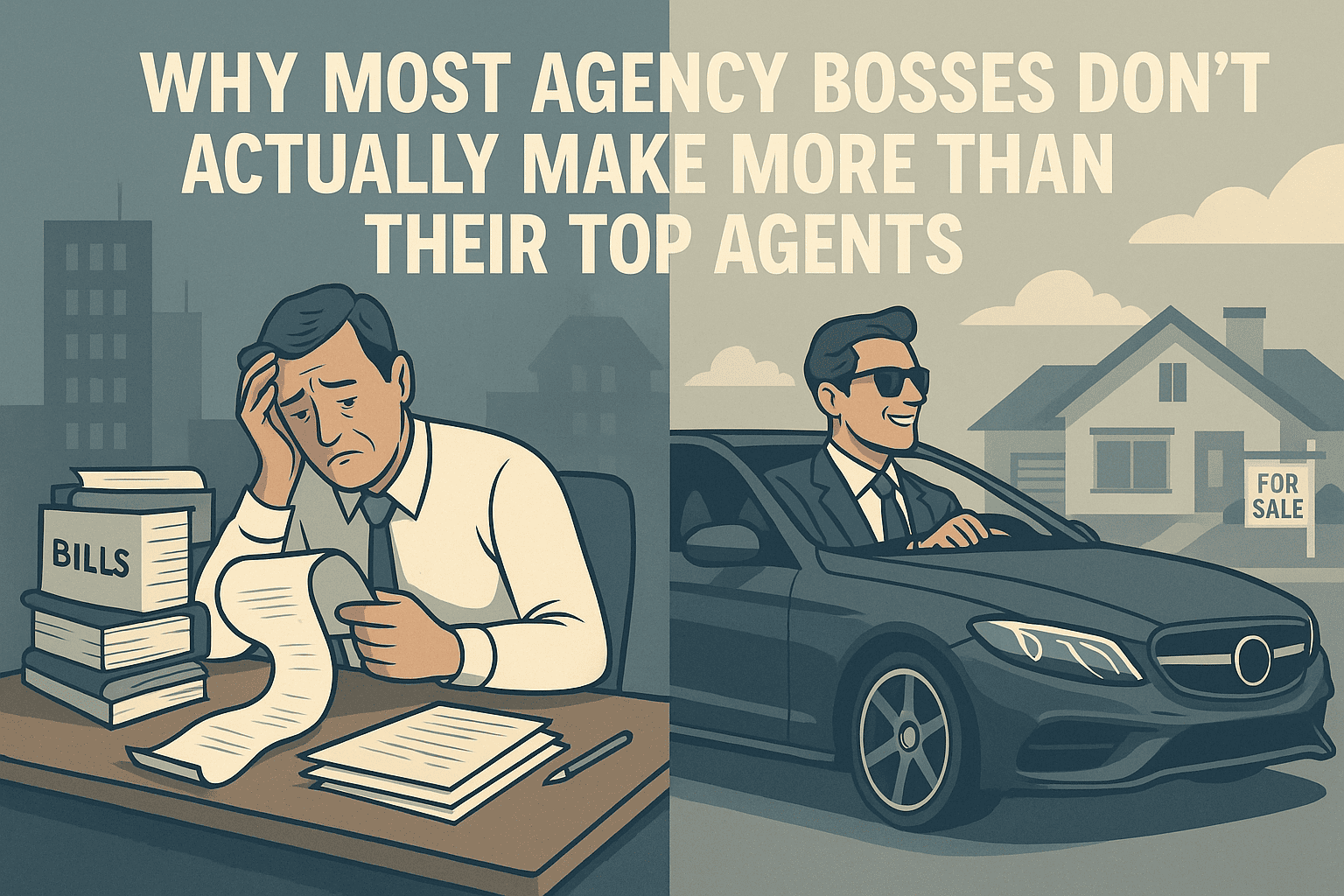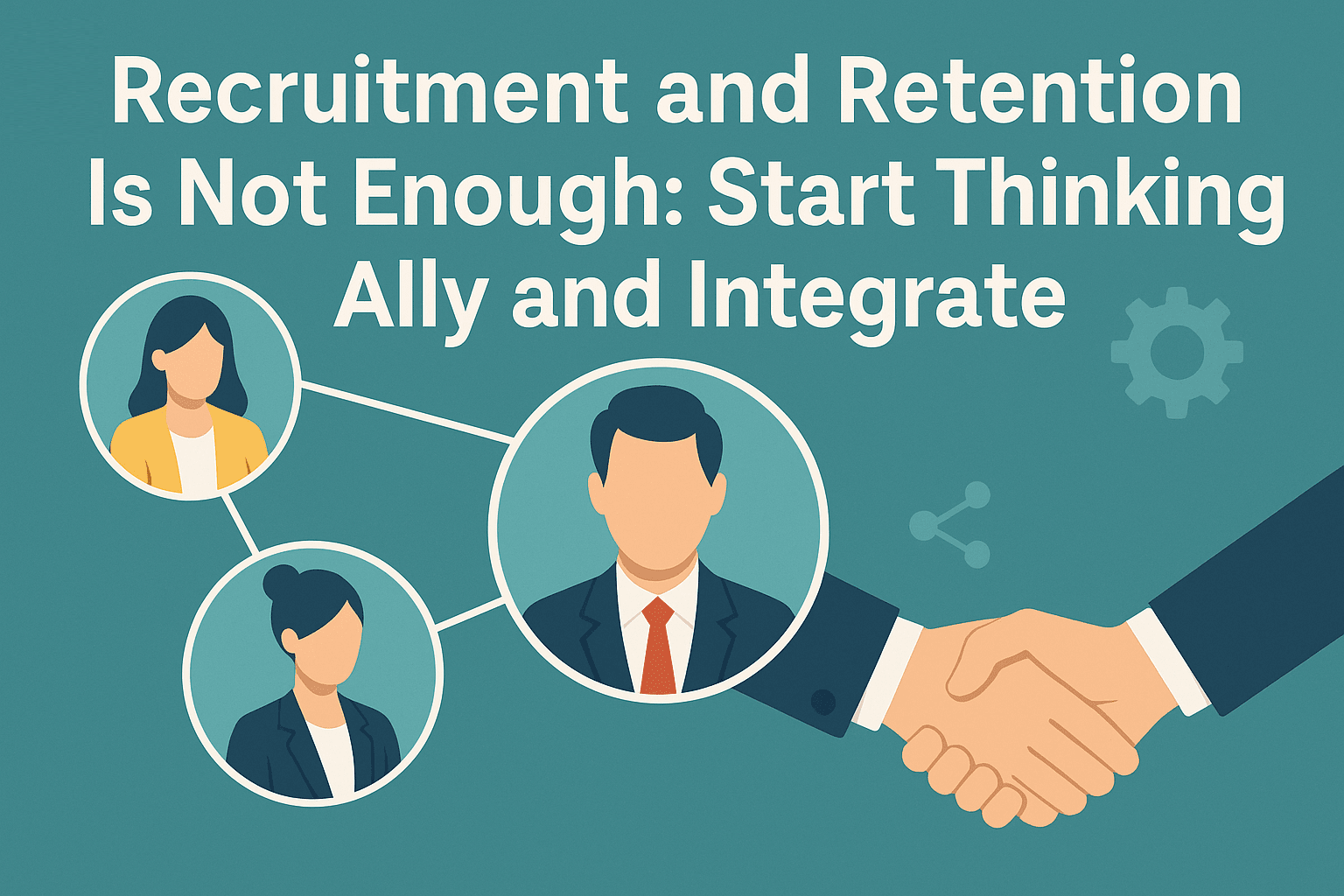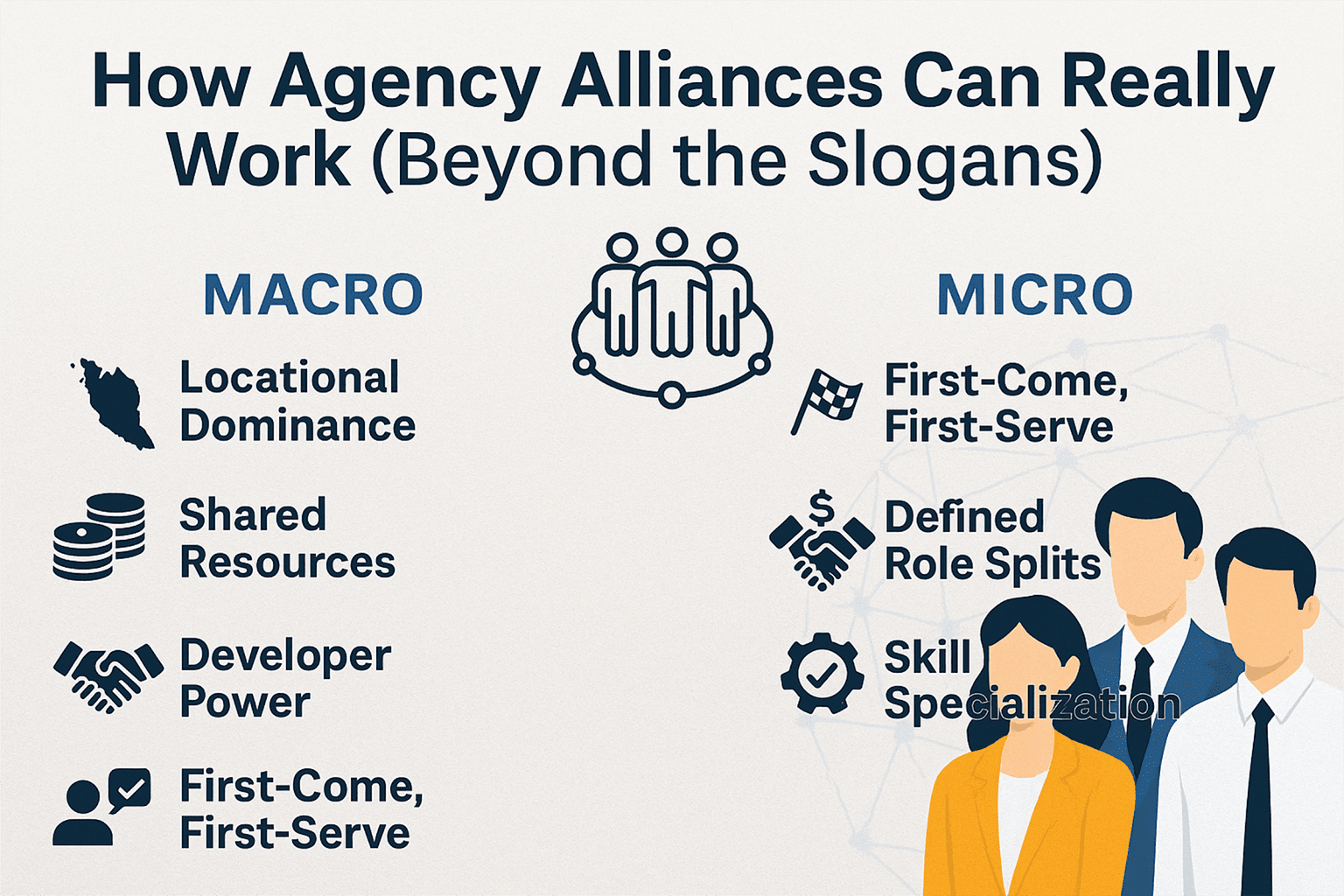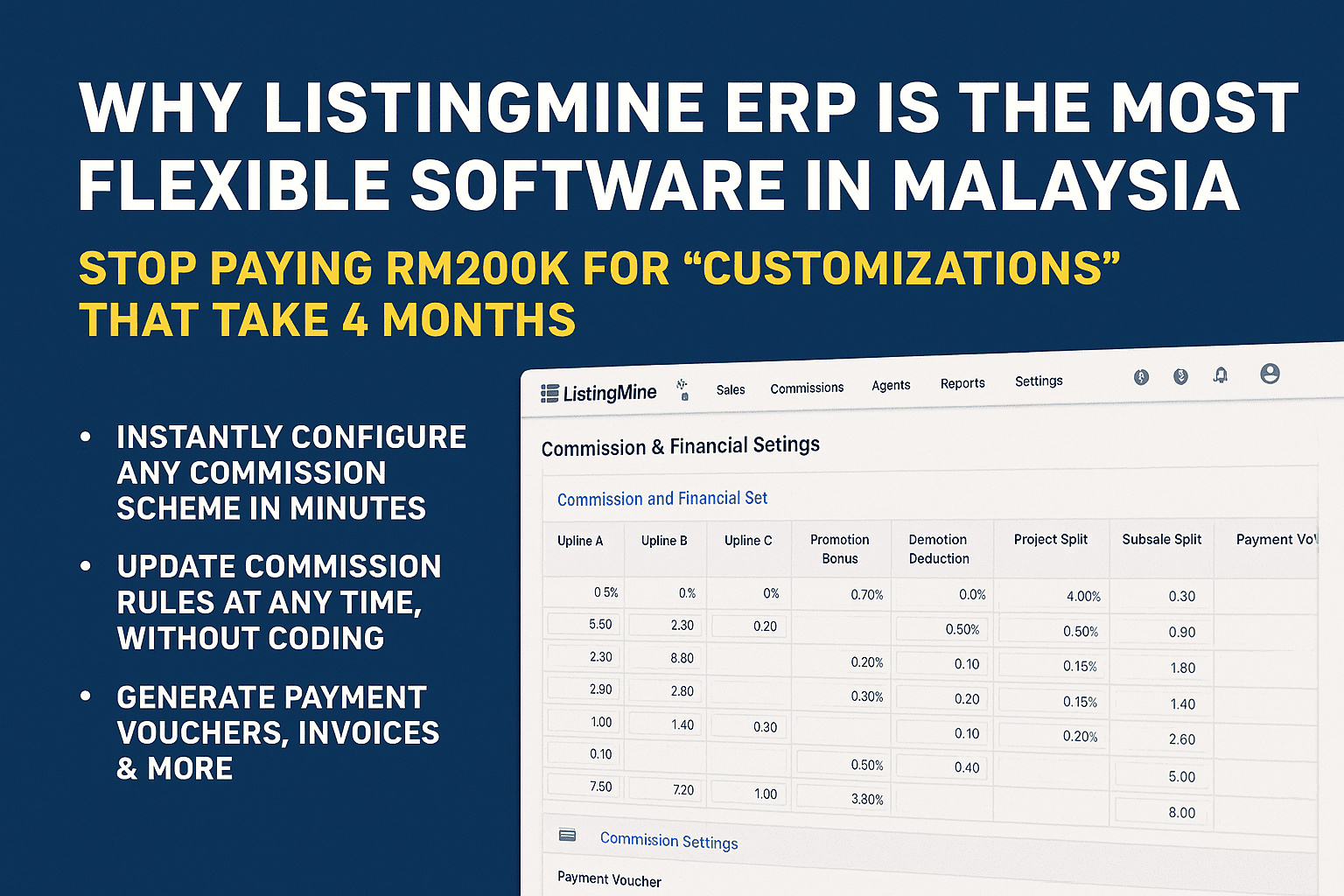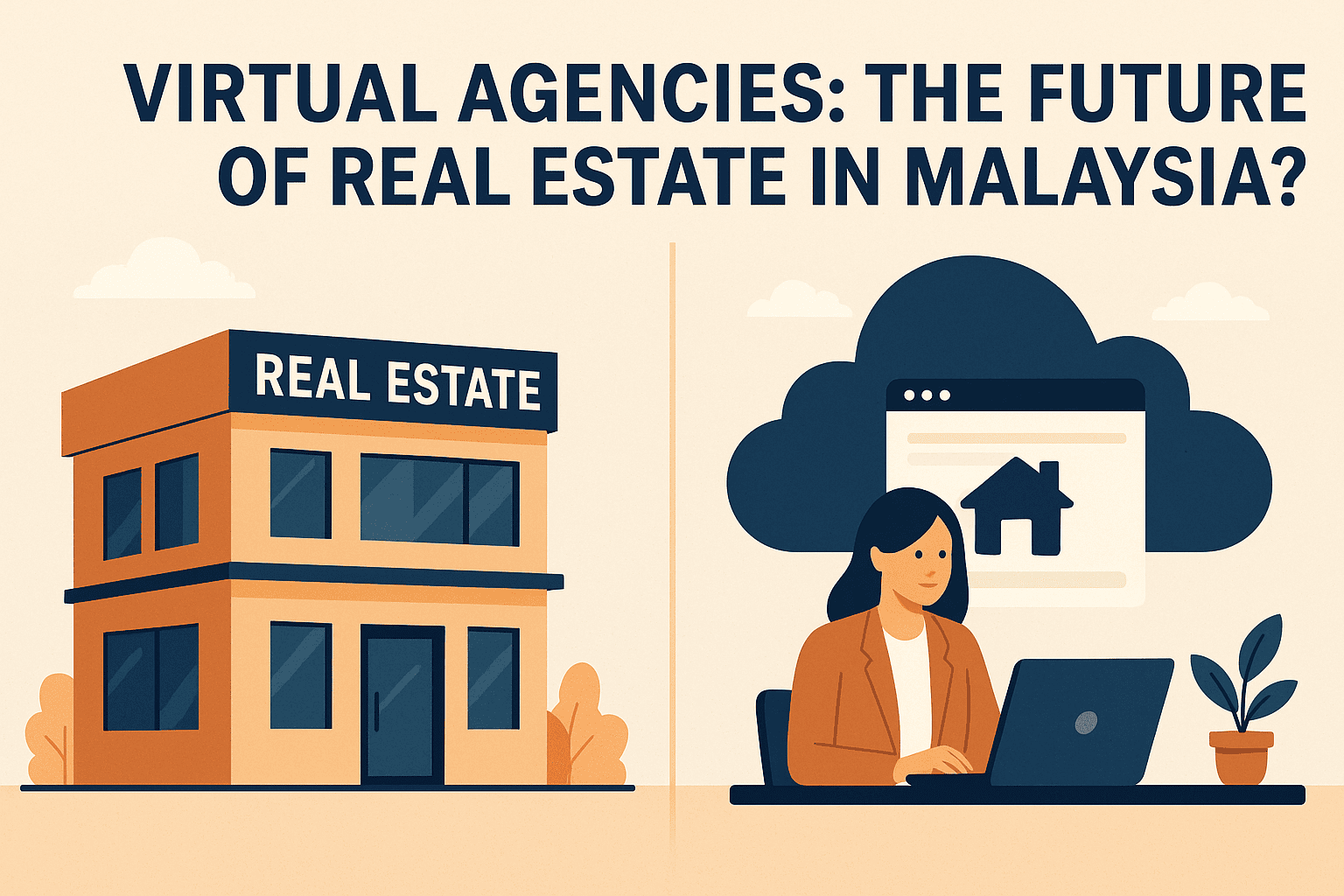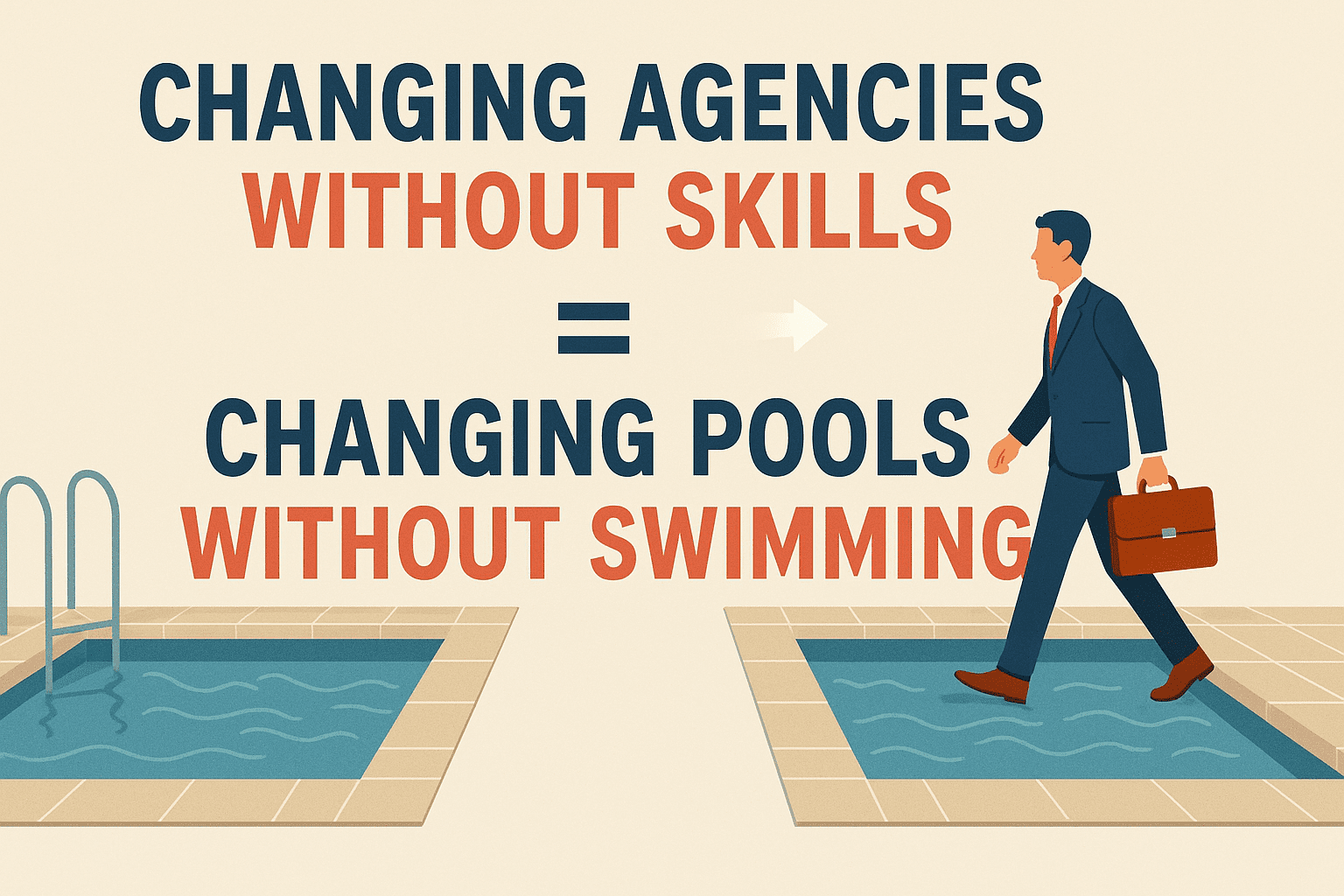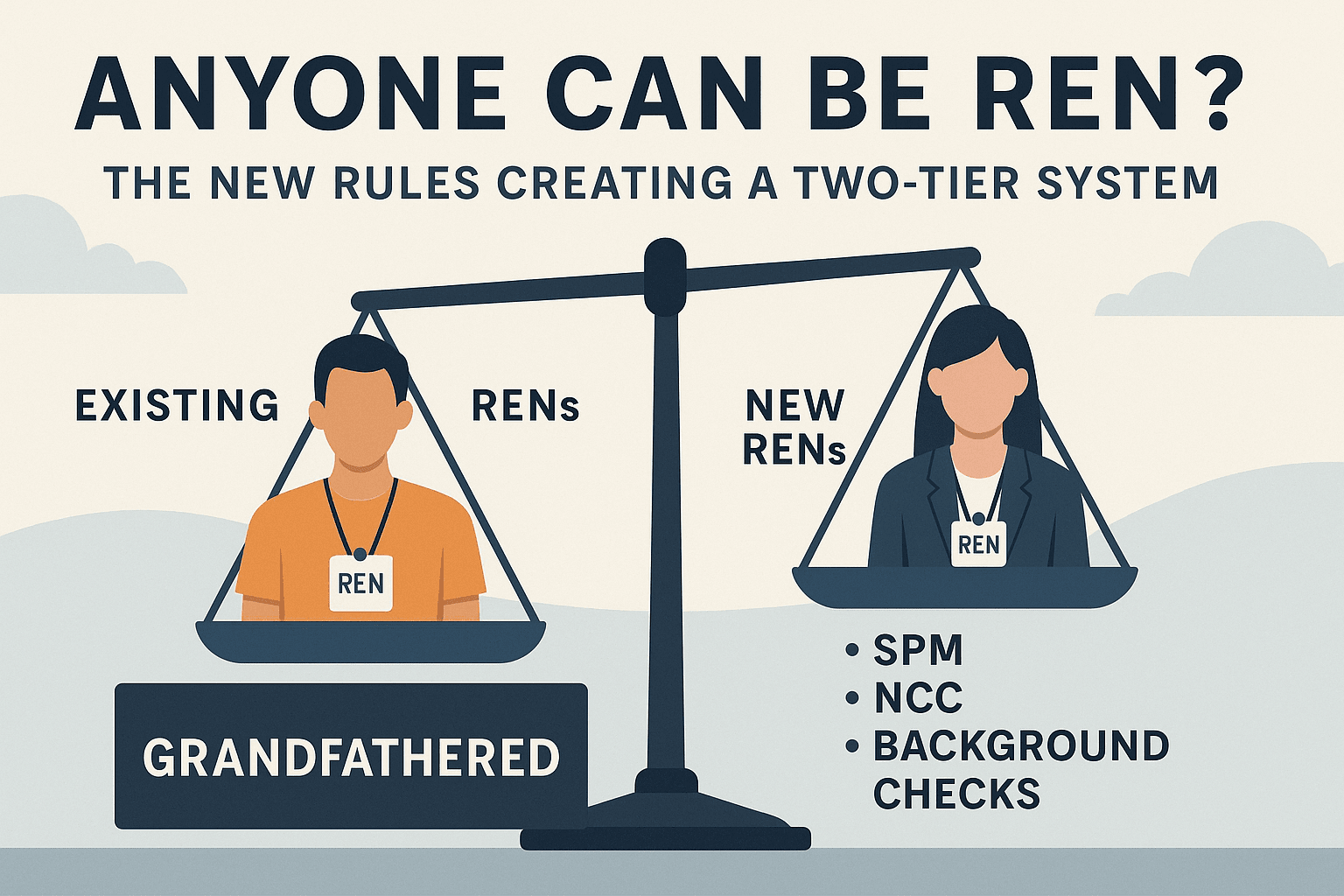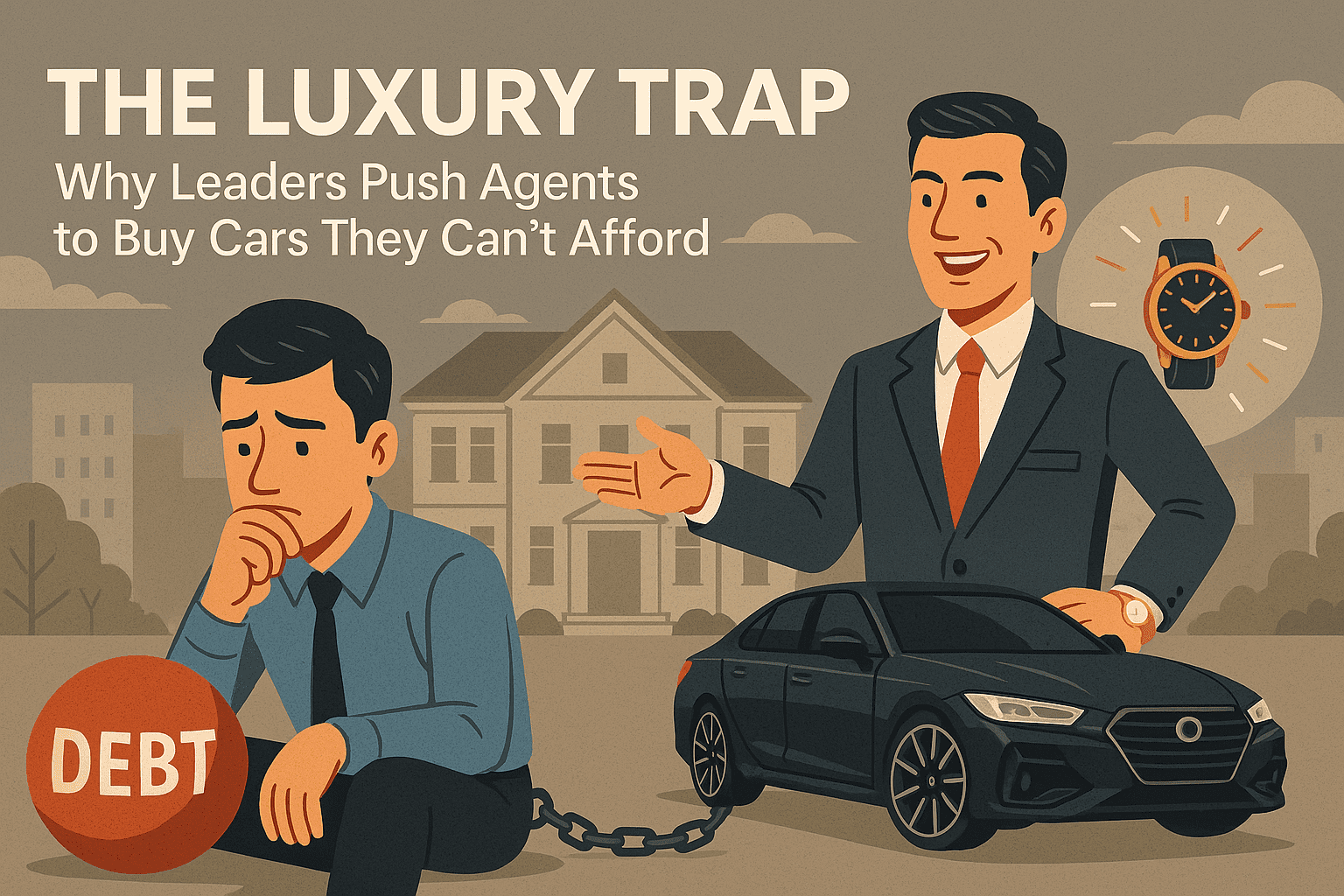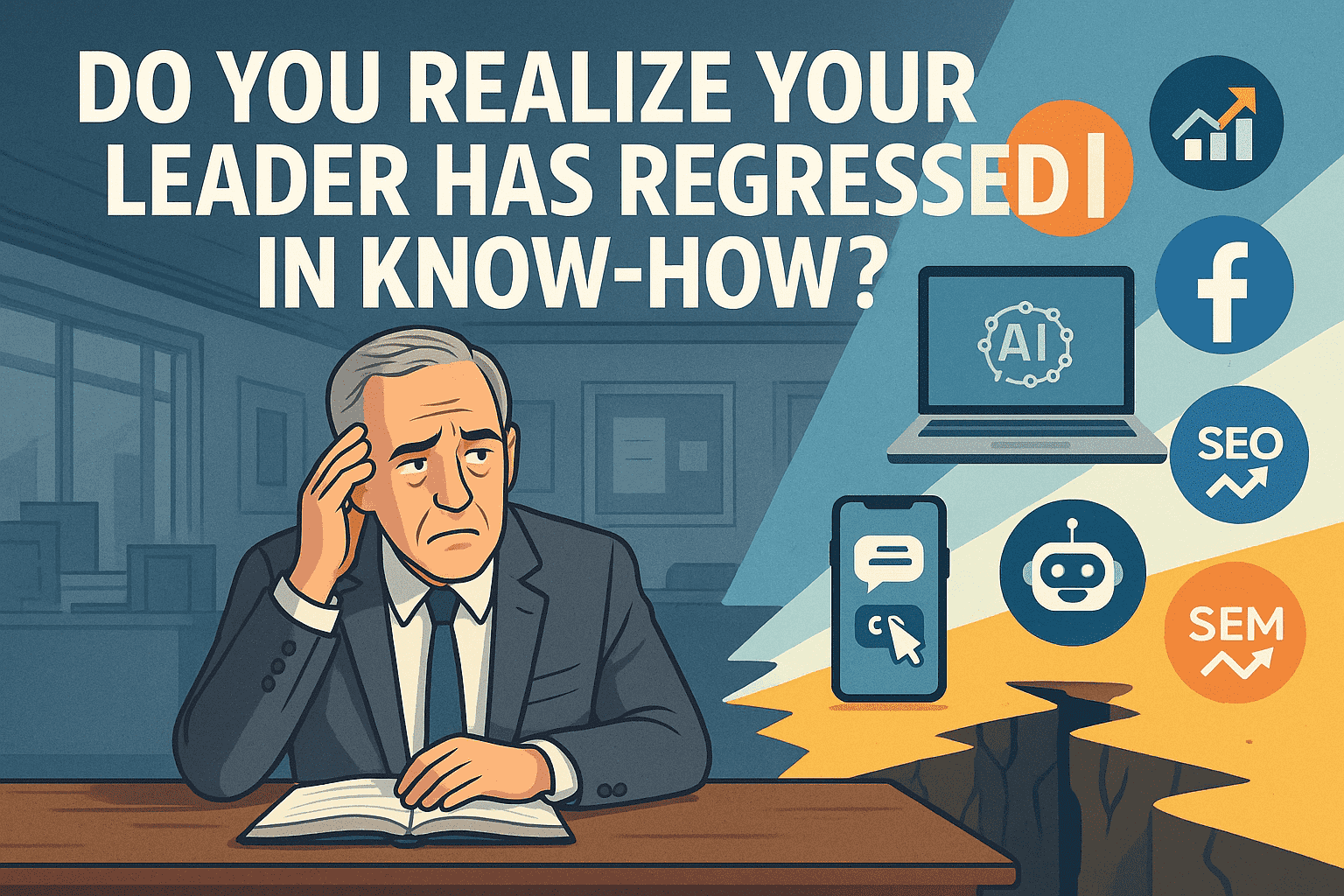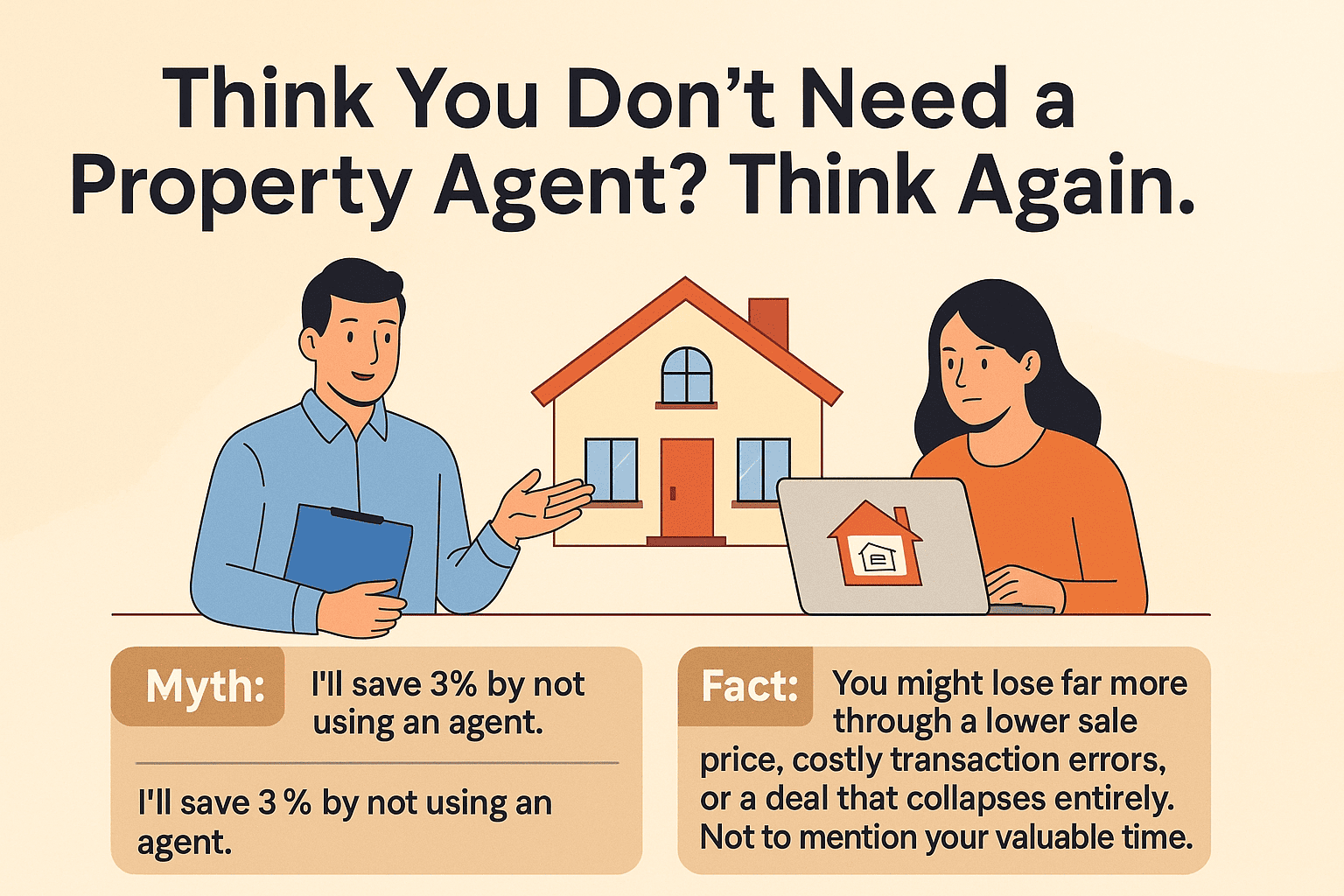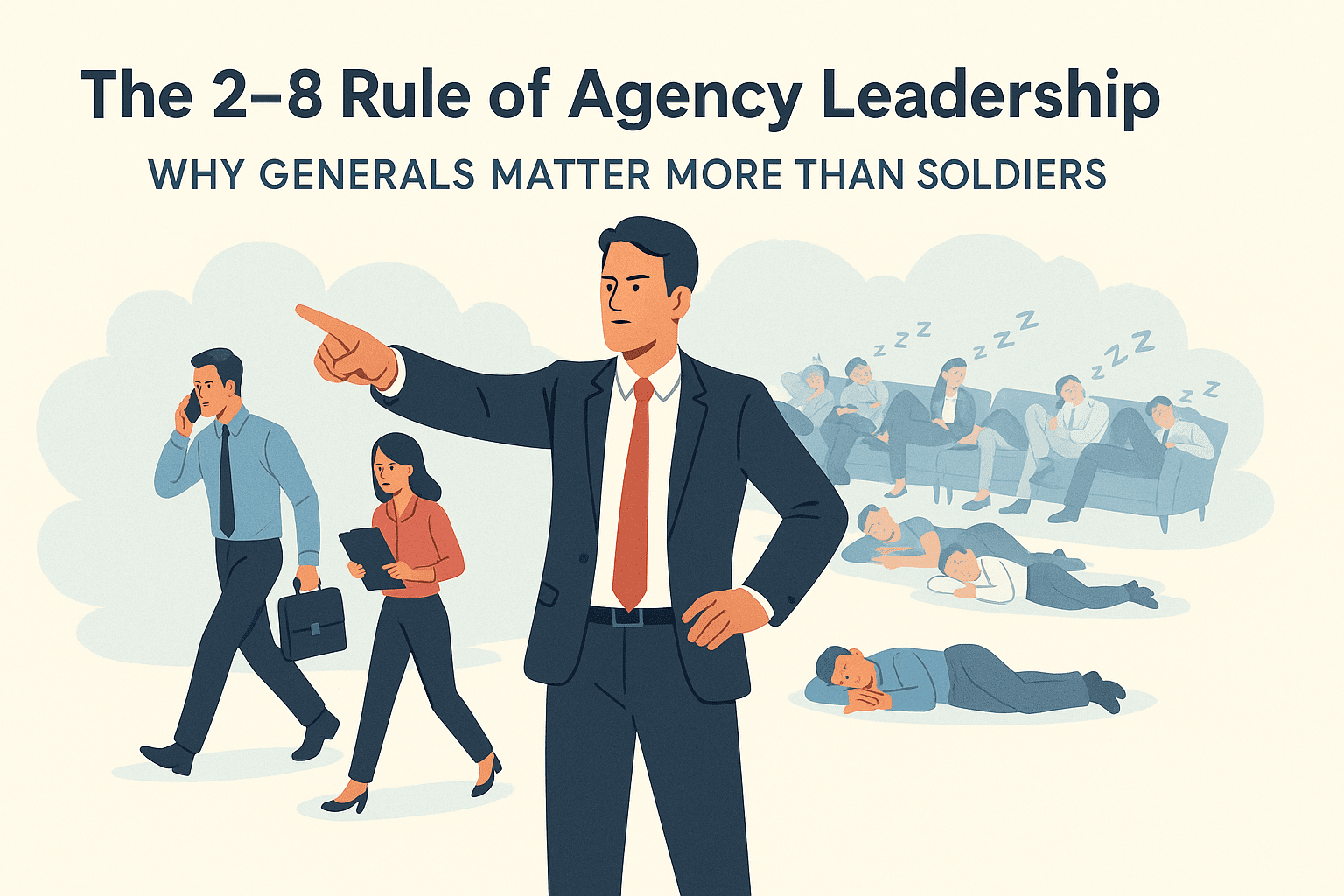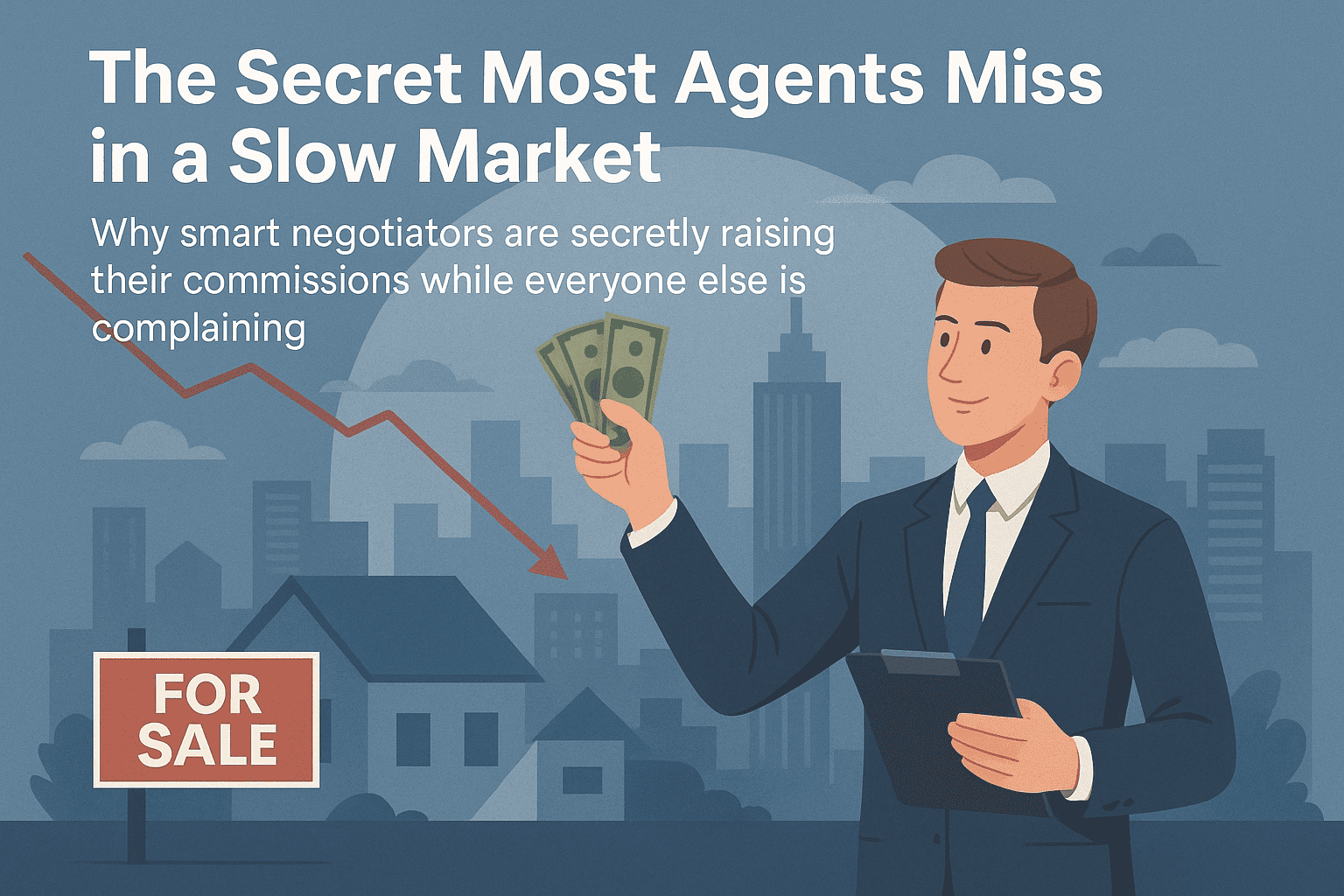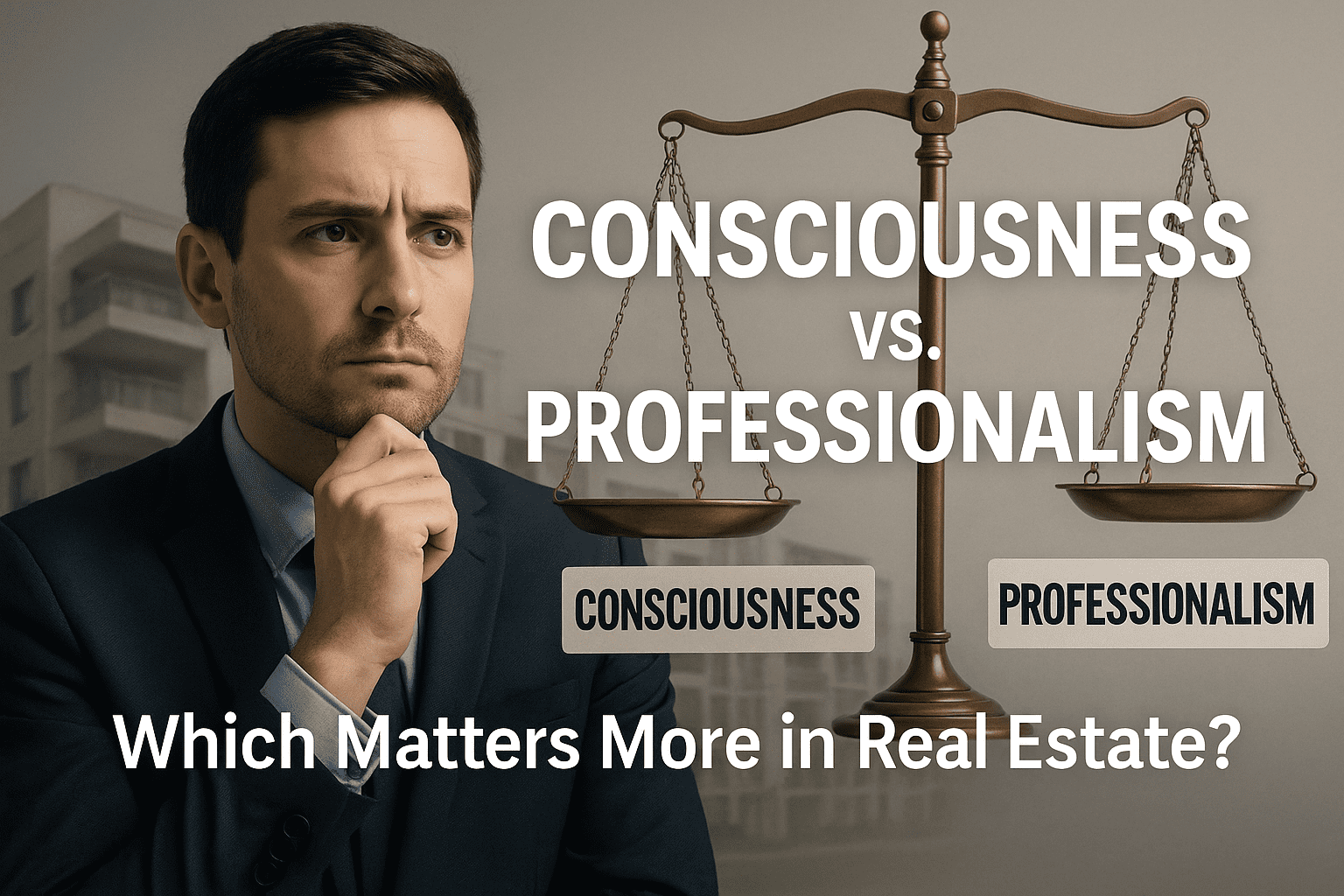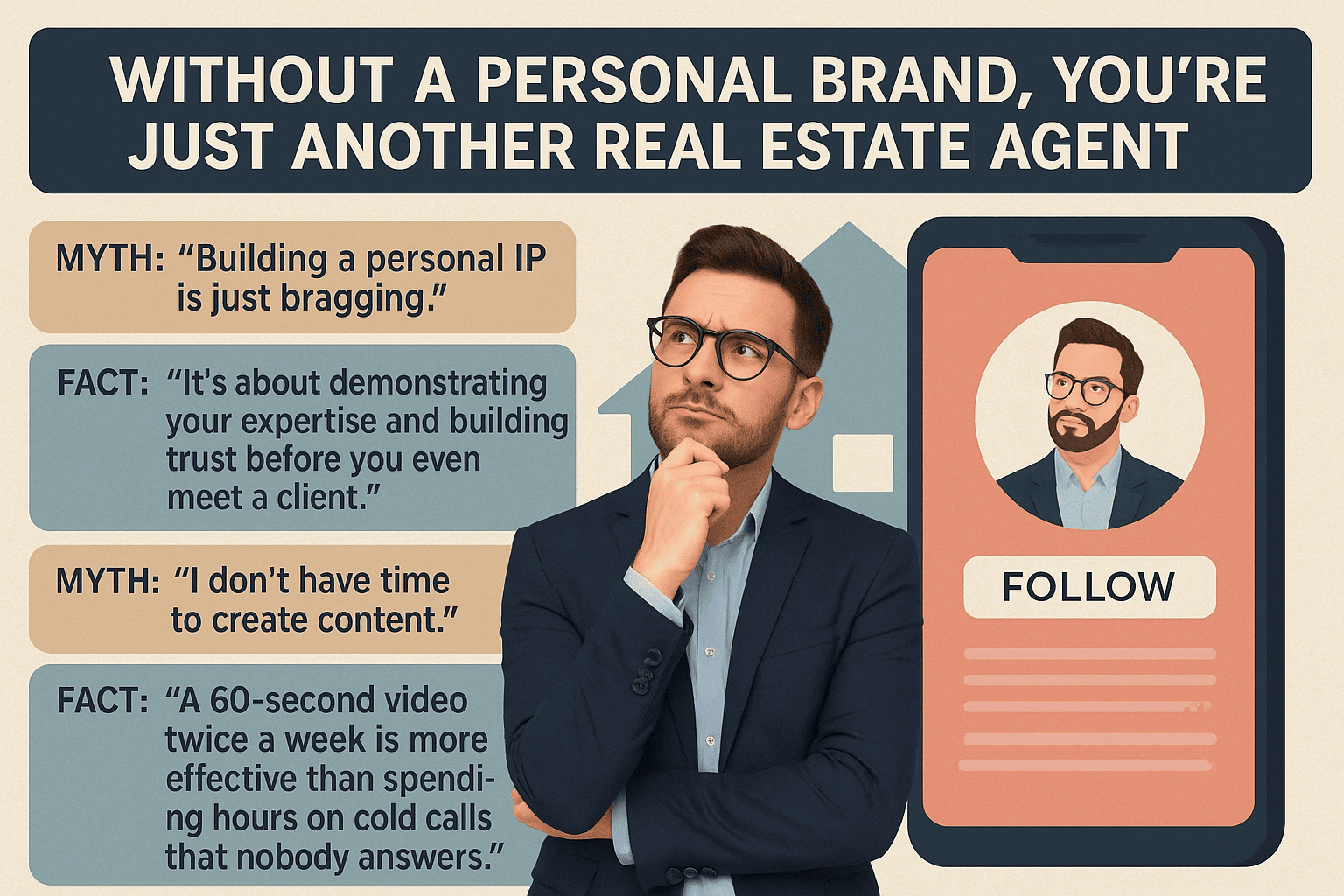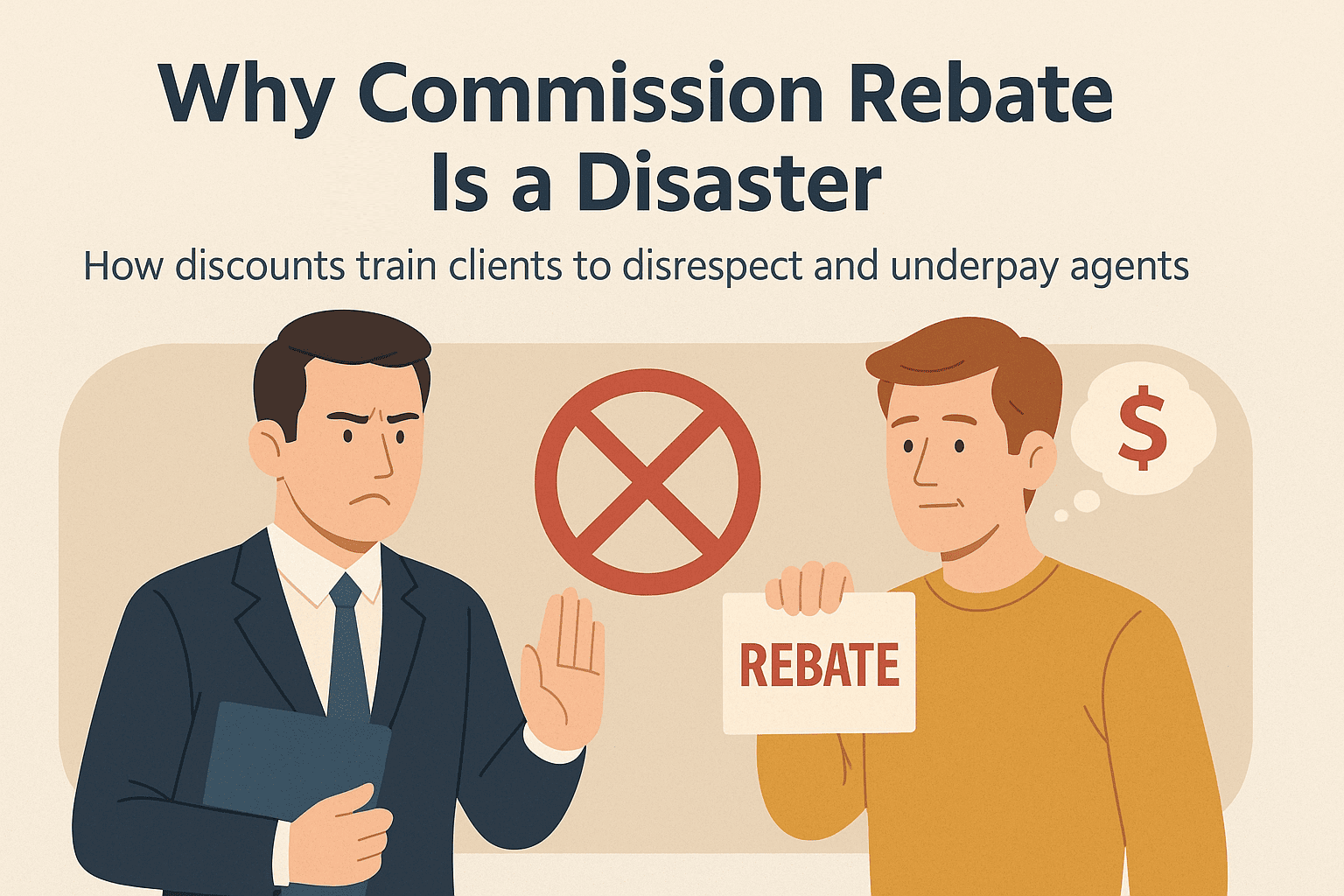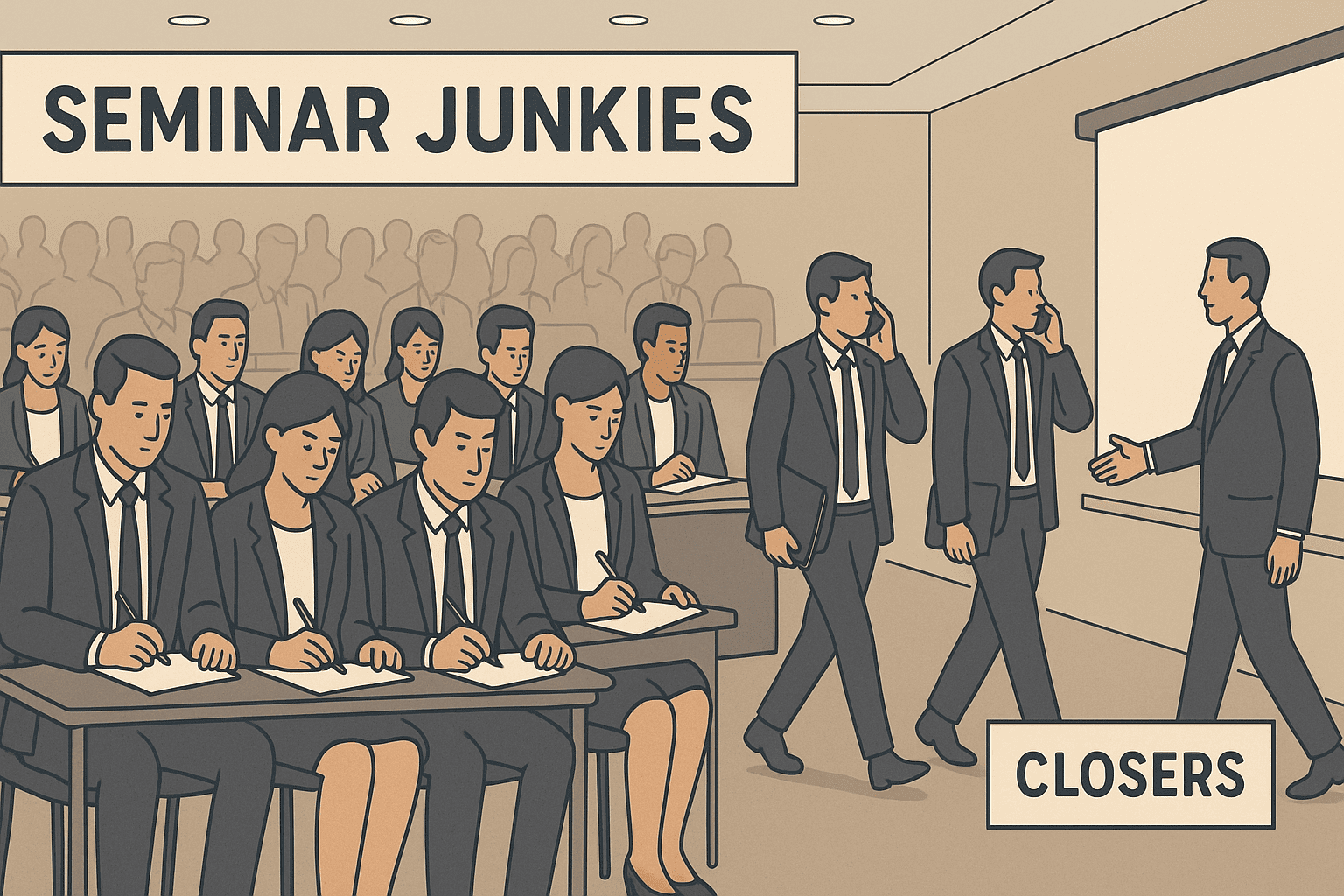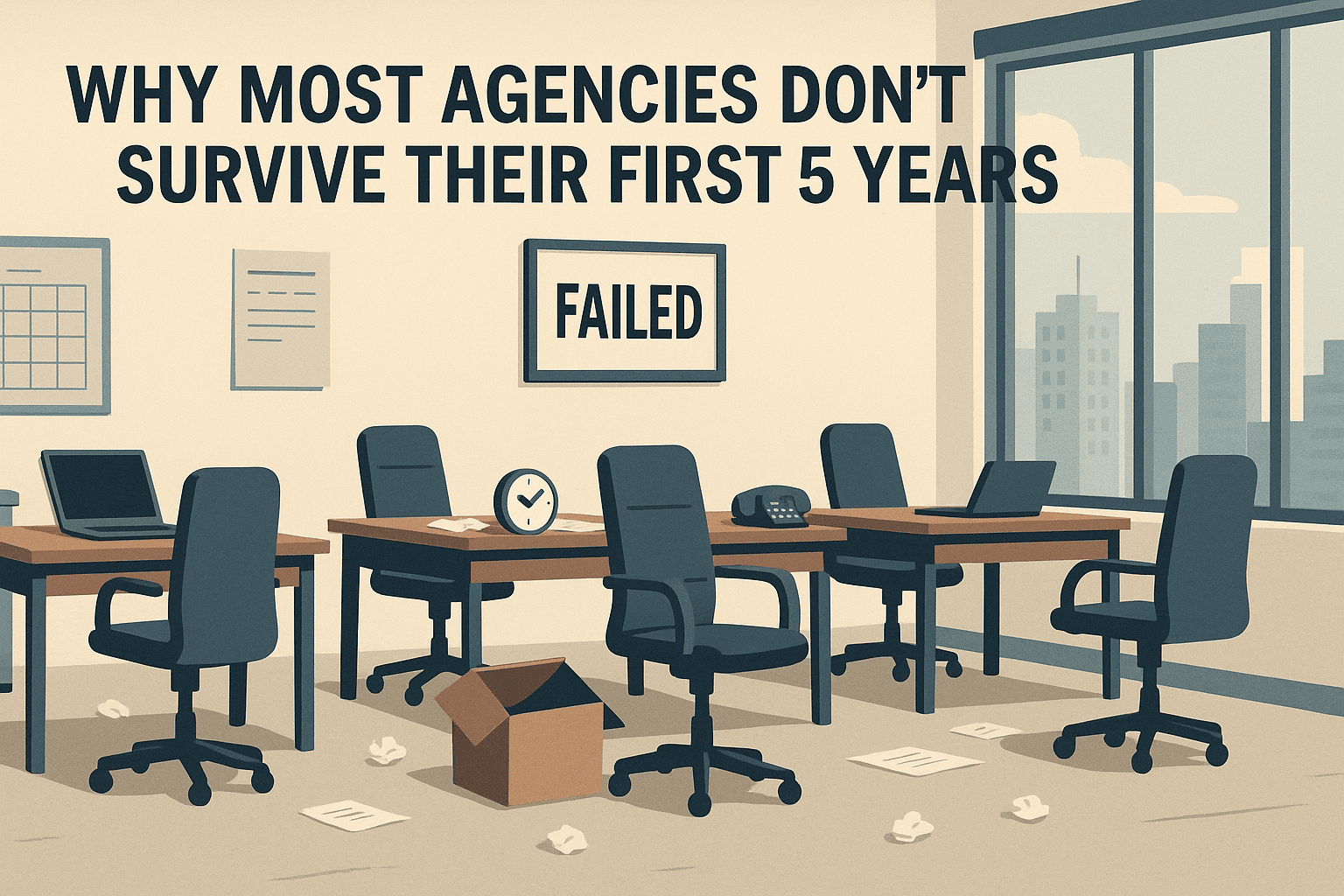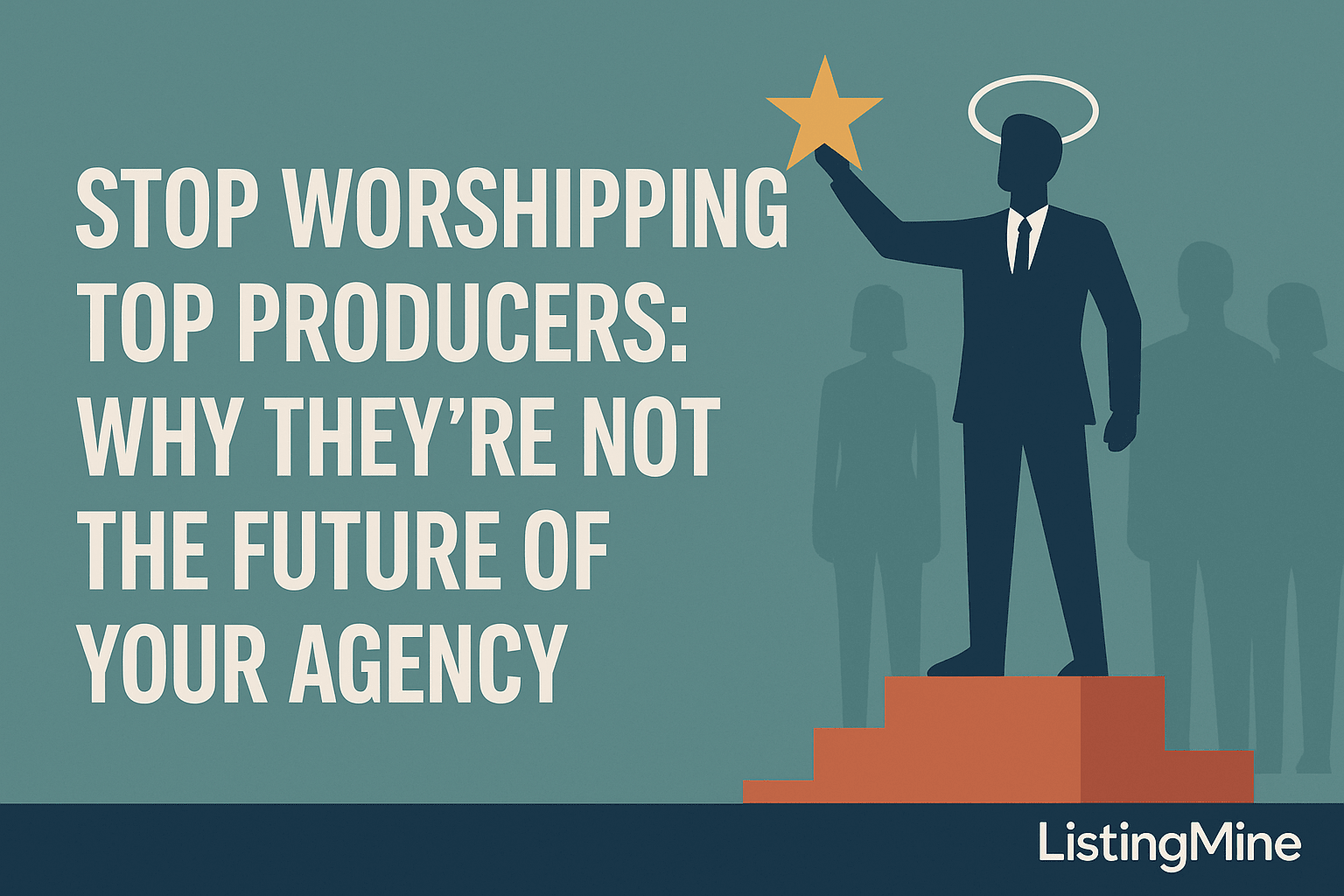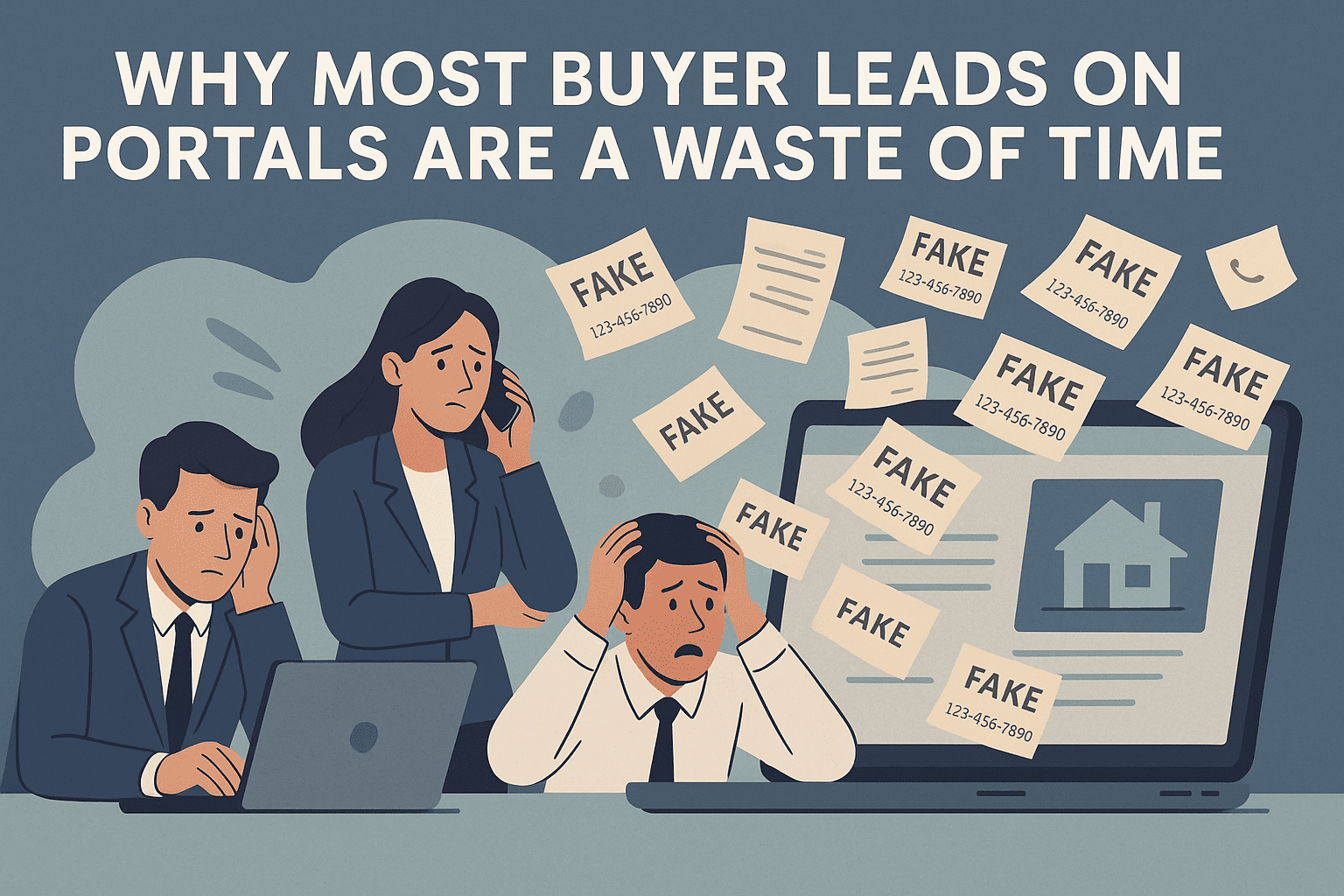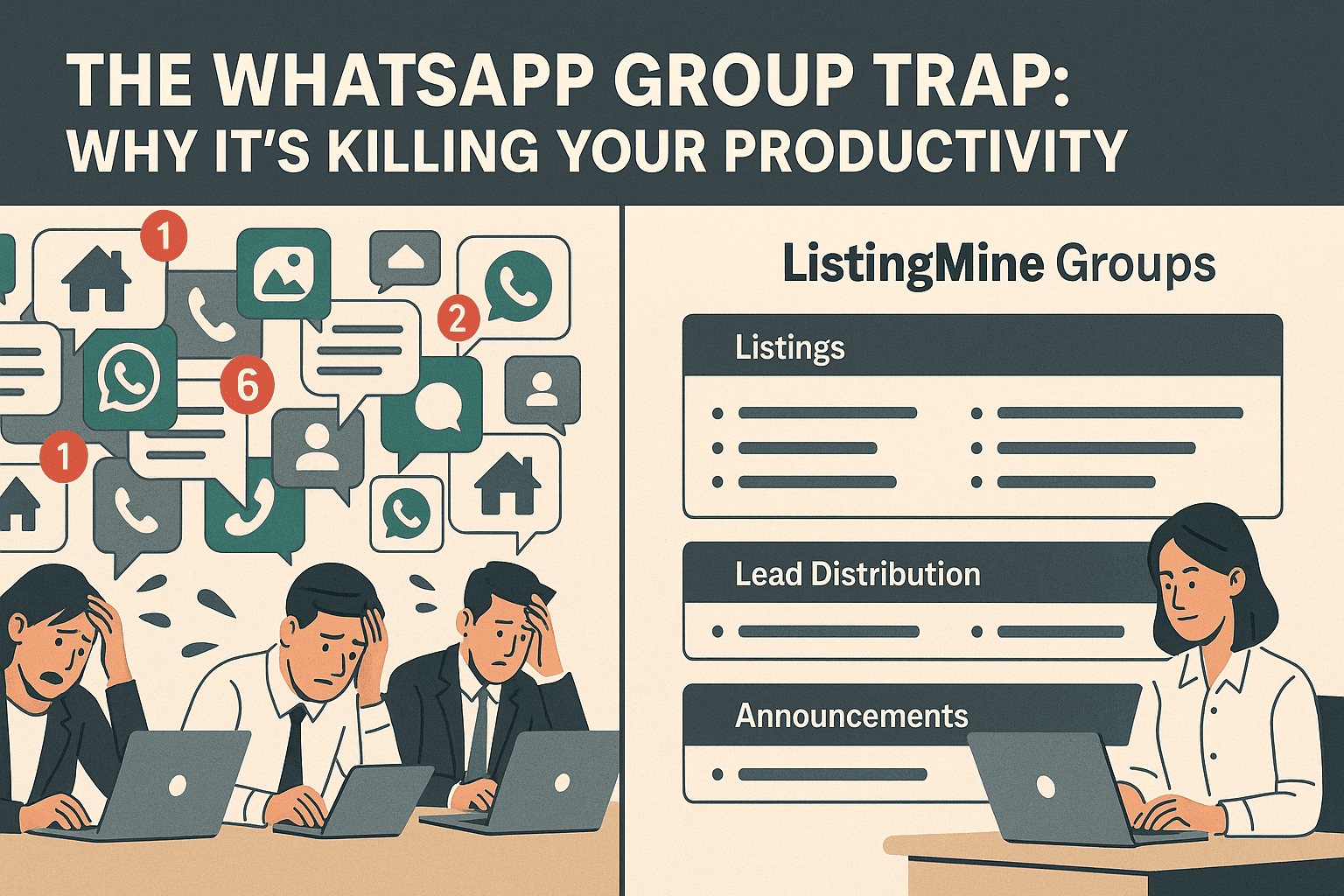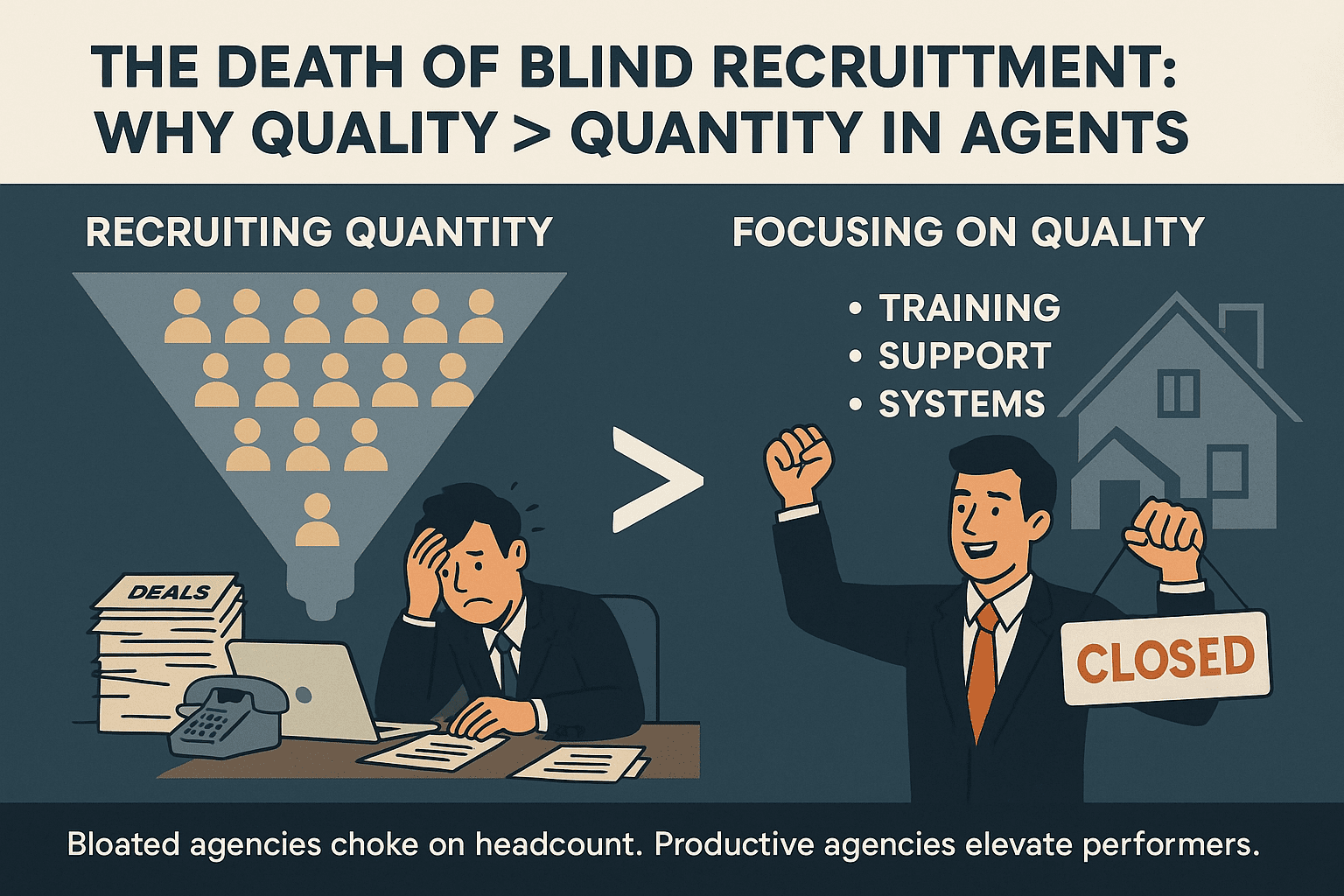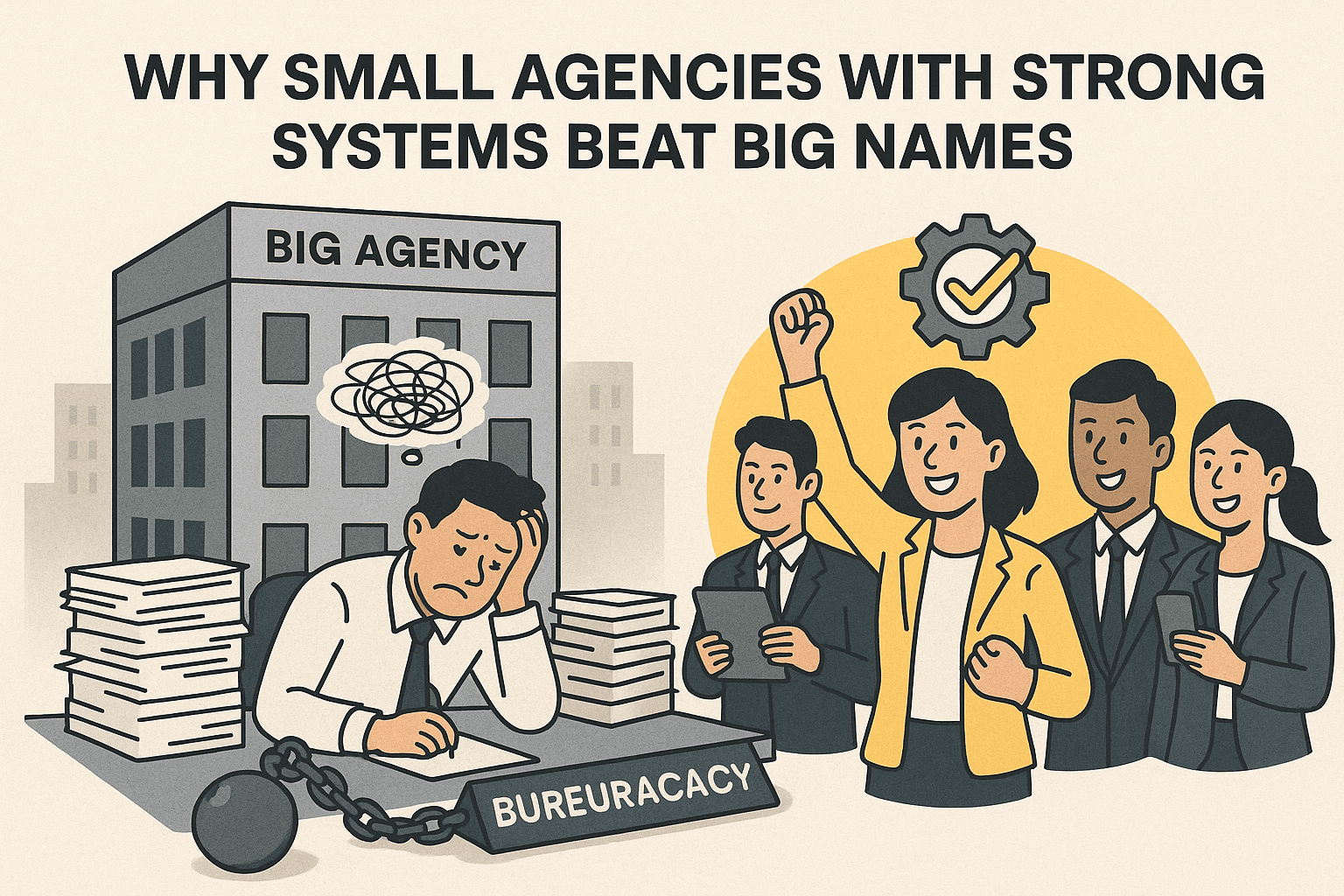The 9 Commission Models in Malaysia’s Real Estate Industry: What They Really Mean for Agents and Bosses

Over the past few years, the founder of ListingMine observed how Malaysian property agencies structure their commission systems — from traditional brokerage setups to newer expansion models designed for scale. The conclusion was clear: many of these systems already exist across the country in different forms, but few agencies truly understand their mechanics or long-term consequences. This article provides a simplified reference to nine common commission frameworks observed in Malaysia’s real estate industry. Each model has multiple variations and hybrids in practice — what’s described here represents only the basic foundation of each, meant as a reference for agency founders, team leaders, and senior negotiators designing their own profit structures.
1) Corporate Model (Base Salary + Simple Bonus)
Structure. Small base salary plus capped commission bonuses.
Traits. Tight management, compliance-driven culture, suitable for valuation, corporate leasing, or institutional projects.
Upside/Downside. Stable workflow but limited income upside; entrepreneurial agents typically move on.
2) Traditional Agency Model
Structure. No base salary. Multi-tier commission with generational overrides.
Traits. Familiar and widely used across Malaysia.
Upside/Downside. Simple to run and easy to join, but over time creates tension between agents and management over contribution versus reward. Company profit control is often weak.
3) Rent/Sale Split Model
Structure. Different payout rules for rentals and sales. Rental commissions often go near 100% to agents, while sales follow a multi-tier sharing model.
Traits. Encourages short-term income flow while keeping a structured system for sales.
Upside/Downside. Good for new agents needing quick cash flow, but can erode company margin and shift focus away from long-term transactions.
4) Role-Based Model (ACN Style)
Structure. Each transaction is divided by function — advertiser, caller, viewing agent, closer, loan/document handler.
Traits. Emphasises collaboration and transparency. Each role is assigned a fixed percentage and unused roles can redistribute automatically.
Upside/Downside. Fair and auditable if systemised, but difficult to manage manually. Works best when integrated into a digital ERP (like ListingMine ERP) or ACN system that captures event proofs and automates commission flows.
5) Company Buyer-Channel Model
Structure. The company owns the lead channels — online marketing, referral networks, developer tie-ins — and distributes buyers to agents.
Traits. Agents focus on property matching, viewings, and closing.
Upside/Downside. Stable flow of leads and good training ground for juniors. However, payouts are lower as the company bears marketing cost and owns the buyer relationship. Agents may struggle to grow independence without strong personal pipelines.
6) Fusion Model
Structure. Blends entrepreneurial leadership with corporate control. Leaders operate semi-independently under one brand, managing their own teams and commission rules. Common patterns include: 100% commission payout once qualifying criteria are met, such as recruiting 2–3 active downline agents who produce sales.
Monthly rental or platform fee to access shared systems and brand marketing. Traits. The core concept is leverage through recruitment — the company forgoes one person’s margin to gain several new producing members beneath them. Leaders earn from overrides or the collective productivity of their recruits, creating a scalable profit engine within a single agency license.
Upside/Downside. Highly effective for rapid growth and leadership development, but difficult to sustain in sales-focused agencies where transactions are low frequency. When the 2–3 downline agents fail to close deals, the leader cannot qualify for 100% payout, breaking the incentive chain. This model works best in rental-oriented companies, where faster turnover and recurring commissions support continuous team activity.
7) Exclusive Inventory Model
Structure. Focuses on verified or exclusive listings where the agency holds marketing rights.
Traits. Splits are typically 60–40 or 70–30, favouring the negotiator while maintaining company oversight.
Upside/Downside. Builds stronger brand credibility and pricing discipline, but scales slowly because exclusivity takes time to secure and verify. Works best for boutique or quality-focused firms.
8) Multi-System Under One Brand
Structure. Can take two forms: One agency brand hosting multiple team systems — each team leader sets their own commission rules, tiering, and culture.
One alliance brand uniting multiple agencies — independent companies sharing common ERP infrastructure, verified inventory, or co-broking network while keeping their own branding and management.
Traits. Encourages flexibility and autonomy. One team might use a traditional tiered model, another a Fusion or ACN-style system, yet all coexist under the same umbrella. The shared backbone — ERP, compliance, or lead management — allows interoperability without forcing uniformity.
Upside: Highly attractive to strong team leaders and agency bosses who value independence but still want shared exposure and infrastructure. Scales fast through diversity of systems and leadership styles.
Downside: Hard to govern consistently without clear reporting standards. Differences in payout logic or listing management can create internal tension unless unified through technology and audit trails.
9) Shared Office or Platform Model
Structure. Agents pay a fixed platform or desk fee and keep 100% of their commissions.
Traits. Independent, low-friction setup — ideal for seasoned agents managing their own listings and leads.
Upside/Downside. Transparent and scalable for individuals, but lacks structure for training or team retention. Culture and collaboration are weak unless reinforced by technology or shared marketing systems.
What This Means for Agency Owners
Each of these nine models represents a core framework, but in reality, most Malaysian agencies run hybrid versions combining features from several systems. The goal is not to choose one, but to design a structure that reflects your strategy, risk tolerance, and growth phase.
Common pitfalls:
- Copying a competitor’s structure without understanding their profit mechanics.
- Running a fusion system without a capital buffer.
- Implementing role-based cooperation manually without system proofs.
ListingMine ERP allows every agency to build, test, and evolve its own model — combining multi-tier overrides, role-based ACN logic, centralized lead channels, and “If Vacant” profit redistribution — all under one flexible platform.
Summary: The 9 Commission Models in Malaysia’s Real Estate Industry
| Model | Structure | Traits | Upside / Downside |
|---|---|---|---|
| 1. Corporate Model (Base Salary + Simple Bonus) | Small base salary plus capped commission bonuses. | Tight management; compliance-driven culture; used in valuation, corporate leasing, institutional projects. | ✅ Stable workflow and predictable income. ❌ Limited income upside; entrepreneurial agents often leave. |
| 2. Traditional Agency Model | No base salary; multi-tier commission with generational overrides. | Familiar, widely used across Malaysia; simple hierarchy. | ✅ Easy to run and join. ❌ Creates tension over fairness; company profit control often weak. |
| 3. Rent / Sale Split Model | Different payout rules for rentals vs sales; rentals often near 100% to agents. | Balances quick-cash rentals with structured sales sharing. | ✅ Good cash flow for new agents. ❌ Erodes company margin; short-term focus. |
| 4. Role-Based Model (ACN Style) | Each transaction is divided by function — advertiser, caller, viewing agent, closer, loan/doc handler. | Promotes collaboration and transparency; each role fixed %; unused roles auto-redistribute. Works best when managed through a digital ERP like ListingMine ERP. | ✅ Fair, auditable, teamwork-oriented. ❌ Hard to manage manually; needs ERP or ACN system for automation. |
| 5. Company Buyer-Channel Model | The company owns leads (marketing, referrals, developer tie-ins) and assigns buyers to agents. | Agents focus on matching, viewings, and closings. | ✅ Stable lead flow; good for juniors. ❌ Lower payout; agents depend on company leads. |
| 6. Fusion Model | Leaders run semi-independent teams; 100% payout after qualifying (e.g., 2–3 productive recruits); may pay platform fee. | Leverages recruitment; company sacrifices one margin to gain multiple producing agents. Often powered by ListingMine Group Tools to track downline production. | ✅ Fast growth, builds leadership tiers. ❌ Hard to sustain in sales-focused agencies (low frequency); works better for rental firms. |
| 7. Exclusive Inventory Model | Focus on verified/exclusive listings with marketing rights. | Builds pricing discipline and brand trust; negotiator-heavy splits (60/40 or 70/30). | ✅ Strengthens brand credibility. ❌ Slow to scale; securing exclusivity takes time. |
| 8. Multi-System Under One Brand | (a) One agency brand hosting multiple team systems. (b) One alliance brand uniting multiple agencies with shared ERP. |
High autonomy; diverse systems (traditional, Fusion, ACN) under one compliance/ERP backbone. Most effective when centralised on ListingMine Alliance ERP. | ✅ Attractive to leaders & bosses; scales fast through diversity. ❌ Hard to govern; payout logic conflicts without strong system controls. |
| 9. Shared Office / Platform Model | Agents pay fixed platform / desk fees and keep 100% commission. | Independent, low-friction setup for experienced agents. | ✅ Transparent, scalable for individuals. ❌ Weak training & retention; culture depends on tech integration. |
Final Thoughts There is no universal “best” commission model. Every structure has variations, and each works only when matched to the right leadership mindset and system discipline. Agencies that understand these frameworks — and have the tools to execute them transparently — are the ones most likely to grow sustainably, attract top producers, and protect long-term profitability.
© 2026 ListingMine.com – Malaysia’s Most Agile & Cost Effective ERP for Property Agencies For educational and industry reference only. Republishing without permission is prohibited.
Disclaimer: Most agencies operate hybrid or variant models. Do not copy blindly. Consult a professional before adapting any structure.

